Problem-Solving Method in Teaching
The problem-solving method is a highly effective teaching strategy that is designed to help students develop critical thinking skills and problem-solving abilities . It involves providing students with real-world problems and challenges that require them to apply their knowledge, skills, and creativity to find solutions. This method encourages active learning, promotes collaboration, and allows students to take ownership of their learning.

Table of Contents
Definition of problem-solving method.
Problem-solving is a process of identifying, analyzing, and resolving problems. The problem-solving method in teaching involves providing students with real-world problems that they must solve through collaboration and critical thinking. This method encourages students to apply their knowledge and creativity to develop solutions that are effective and practical.
Meaning of Problem-Solving Method
The meaning and Definition of problem-solving are given by different Scholars. These are-
Woodworth and Marquis(1948) : Problem-solving behavior occurs in novel or difficult situations in which a solution is not obtainable by the habitual methods of applying concepts and principles derived from past experience in very similar situations.
Skinner (1968): Problem-solving is a process of overcoming difficulties that appear to interfere with the attainment of a goal. It is the procedure of making adjustments in spite of interference
Benefits of Problem-Solving Method
The problem-solving method has several benefits for both students and teachers. These benefits include:
- Encourages active learning: The problem-solving method encourages students to actively participate in their own learning by engaging them in real-world problems that require critical thinking and collaboration
- Promotes collaboration: Problem-solving requires students to work together to find solutions. This promotes teamwork, communication, and cooperation.
- Builds critical thinking skills: The problem-solving method helps students develop critical thinking skills by providing them with opportunities to analyze and evaluate problems
- Increases motivation: When students are engaged in solving real-world problems, they are more motivated to learn and apply their knowledge.
- Enhances creativity: The problem-solving method encourages students to be creative in finding solutions to problems.
Steps in Problem-Solving Method
The problem-solving method involves several steps that teachers can use to guide their students. These steps include
- Identifying the problem: The first step in problem-solving is identifying the problem that needs to be solved. Teachers can present students with a real-world problem or challenge that requires critical thinking and collaboration.
- Analyzing the problem: Once the problem is identified, students should analyze it to determine its scope and underlying causes.
- Generating solutions: After analyzing the problem, students should generate possible solutions. This step requires creativity and critical thinking.
- Evaluating solutions: The next step is to evaluate each solution based on its effectiveness and practicality
- Selecting the best solution: The final step is to select the best solution and implement it.
Verification of the concluded solution or Hypothesis
The solution arrived at or the conclusion drawn must be further verified by utilizing it in solving various other likewise problems. In case, the derived solution helps in solving these problems, then and only then if one is free to agree with his finding regarding the solution. The verified solution may then become a useful product of his problem-solving behavior that can be utilized in solving further problems. The above steps can be utilized in solving various problems thereby fostering creative thinking ability in an individual.
The problem-solving method is an effective teaching strategy that promotes critical thinking, creativity, and collaboration. It provides students with real-world problems that require them to apply their knowledge and skills to find solutions. By using the problem-solving method, teachers can help their students develop the skills they need to succeed in school and in life.
- Jonassen, D. (2011). Learning to solve problems: A handbook for designing problem-solving learning environments. Routledge.
- Hmelo-Silver, C. E. (2004). Problem-based learning: What and how do students learn? Educational Psychology Review, 16(3), 235-266.
- Mergendoller, J. R., Maxwell, N. L., & Bellisimo, Y. (2006). The effectiveness of problem-based instruction: A comparative study of instructional methods and student characteristics. Interdisciplinary Journal of Problem-based Learning, 1(2), 49-69.
- Richey, R. C., Klein, J. D., & Tracey, M. W. (2011). The instructional design knowledge base: Theory, research, and practice. Routledge.
- Savery, J. R., & Duffy, T. M. (2001). Problem-based learning: An instructional model and its constructivist framework. CRLT Technical Report No. 16-01, University of Michigan. Wojcikowski, J. (2013). Solving real-world problems through problem-based learning. College Teaching, 61(4), 153-156

Center for Teaching
Teaching problem solving.
Print Version
Tips and Techniques
Expert vs. novice problem solvers, communicate.
- Have students identify specific problems, difficulties, or confusions . Don’t waste time working through problems that students already understand.
- If students are unable to articulate their concerns, determine where they are having trouble by asking them to identify the specific concepts or principles associated with the problem.
- In a one-on-one tutoring session, ask the student to work his/her problem out loud . This slows down the thinking process, making it more accurate and allowing you to access understanding.
- When working with larger groups you can ask students to provide a written “two-column solution.” Have students write up their solution to a problem by putting all their calculations in one column and all of their reasoning (in complete sentences) in the other column. This helps them to think critically about their own problem solving and helps you to more easily identify where they may be having problems. Two-Column Solution (Math) Two-Column Solution (Physics)
Encourage Independence
- Model the problem solving process rather than just giving students the answer. As you work through the problem, consider how a novice might struggle with the concepts and make your thinking clear
- Have students work through problems on their own. Ask directing questions or give helpful suggestions, but provide only minimal assistance and only when needed to overcome obstacles.
- Don’t fear group work ! Students can frequently help each other, and talking about a problem helps them think more critically about the steps needed to solve the problem. Additionally, group work helps students realize that problems often have multiple solution strategies, some that might be more effective than others
Be sensitive
- Frequently, when working problems, students are unsure of themselves. This lack of confidence may hamper their learning. It is important to recognize this when students come to us for help, and to give each student some feeling of mastery. Do this by providing positive reinforcement to let students know when they have mastered a new concept or skill.
Encourage Thoroughness and Patience
- Try to communicate that the process is more important than the answer so that the student learns that it is OK to not have an instant solution. This is learned through your acceptance of his/her pace of doing things, through your refusal to let anxiety pressure you into giving the right answer, and through your example of problem solving through a step-by step process.
Experts (teachers) in a particular field are often so fluent in solving problems from that field that they can find it difficult to articulate the problem solving principles and strategies they use to novices (students) in their field because these principles and strategies are second nature to the expert. To teach students problem solving skills, a teacher should be aware of principles and strategies of good problem solving in his or her discipline .
The mathematician George Polya captured the problem solving principles and strategies he used in his discipline in the book How to Solve It: A New Aspect of Mathematical Method (Princeton University Press, 1957). The book includes a summary of Polya’s problem solving heuristic as well as advice on the teaching of problem solving.

Teaching Guides
- Online Course Development Resources
- Principles & Frameworks
- Pedagogies & Strategies
- Reflecting & Assessing
- Challenges & Opportunities
- Populations & Contexts
Quick Links
- Services for Departments and Schools
- Examples of Online Instructional Modules
Teaching Problem-Solving Skills
Many instructors design opportunities for students to solve “problems”. But are their students solving true problems or merely participating in practice exercises? The former stresses critical thinking and decision making skills whereas the latter requires only the application of previously learned procedures.
Problem solving is often broadly defined as "the ability to understand the environment, identify complex problems, review related information to develop, evaluate strategies and implement solutions to build the desired outcome" (Fissore, C. et al, 2021). True problem solving is the process of applying a method – not known in advance – to a problem that is subject to a specific set of conditions and that the problem solver has not seen before, in order to obtain a satisfactory solution.
Below you will find some basic principles for teaching problem solving and one model to implement in your classroom teaching.
Principles for teaching problem solving
- Model a useful problem-solving method . Problem solving can be difficult and sometimes tedious. Show students how to be patient and persistent, and how to follow a structured method, such as Woods’ model described below. Articulate your method as you use it so students see the connections.
- Teach within a specific context . Teach problem-solving skills in the context in which they will be used by students (e.g., mole fraction calculations in a chemistry course). Use real-life problems in explanations, examples, and exams. Do not teach problem solving as an independent, abstract skill.
- Help students understand the problem . In order to solve problems, students need to define the end goal. This step is crucial to successful learning of problem-solving skills. If you succeed at helping students answer the questions “what?” and “why?”, finding the answer to “how?” will be easier.
- Take enough time . When planning a lecture/tutorial, budget enough time for: understanding the problem and defining the goal (both individually and as a class); dealing with questions from you and your students; making, finding, and fixing mistakes; and solving entire problems in a single session.
- Ask questions and make suggestions . Ask students to predict “what would happen if …” or explain why something happened. This will help them to develop analytical and deductive thinking skills. Also, ask questions and make suggestions about strategies to encourage students to reflect on the problem-solving strategies that they use.
- Link errors to misconceptions . Use errors as evidence of misconceptions, not carelessness or random guessing. Make an effort to isolate the misconception and correct it, then teach students to do this by themselves. We can all learn from mistakes.
Woods’ problem-solving model
Define the problem.
- The system . Have students identify the system under study (e.g., a metal bridge subject to certain forces) by interpreting the information provided in the problem statement. Drawing a diagram is a great way to do this.
- Known(s) and concepts . List what is known about the problem, and identify the knowledge needed to understand (and eventually) solve it.
- Unknown(s) . Once you have a list of knowns, identifying the unknown(s) becomes simpler. One unknown is generally the answer to the problem, but there may be other unknowns. Be sure that students understand what they are expected to find.
- Units and symbols . One key aspect in problem solving is teaching students how to select, interpret, and use units and symbols. Emphasize the use of units whenever applicable. Develop a habit of using appropriate units and symbols yourself at all times.
- Constraints . All problems have some stated or implied constraints. Teach students to look for the words "only", "must", "neglect", or "assume" to help identify the constraints.
- Criteria for success . Help students consider, from the beginning, what a logical type of answer would be. What characteristics will it possess? For example, a quantitative problem will require an answer in some form of numerical units (e.g., $/kg product, square cm, etc.) while an optimization problem requires an answer in the form of either a numerical maximum or minimum.
Think about it
- “Let it simmer”. Use this stage to ponder the problem. Ideally, students will develop a mental image of the problem at hand during this stage.
- Identify specific pieces of knowledge . Students need to determine by themselves the required background knowledge from illustrations, examples and problems covered in the course.
- Collect information . Encourage students to collect pertinent information such as conversion factors, constants, and tables needed to solve the problem.
Plan a solution
- Consider possible strategies . Often, the type of solution will be determined by the type of problem. Some common problem-solving strategies are: compute; simplify; use an equation; make a model, diagram, table, or chart; or work backwards.
- Choose the best strategy . Help students to choose the best strategy by reminding them again what they are required to find or calculate.
Carry out the plan
- Be patient . Most problems are not solved quickly or on the first attempt. In other cases, executing the solution may be the easiest step.
- Be persistent . If a plan does not work immediately, do not let students get discouraged. Encourage them to try a different strategy and keep trying.
Encourage students to reflect. Once a solution has been reached, students should ask themselves the following questions:
- Does the answer make sense?
- Does it fit with the criteria established in step 1?
- Did I answer the question(s)?
- What did I learn by doing this?
- Could I have done the problem another way?
If you would like support applying these tips to your own teaching, CTE staff members are here to help. View the CTE Support page to find the most relevant staff member to contact.
- Fissore, C., Marchisio, M., Roman, F., & Sacchet, M. (2021). Development of problem solving skills with Maple in higher education. In: Corless, R.M., Gerhard, J., Kotsireas, I.S. (eds) Maple in Mathematics Education and Research. MC 2020. Communications in Computer and Information Science, vol 1414. Springer, Cham. https://doi.org/10.1007/978-3-030-81698-8_15
- Foshay, R., & Kirkley, J. (1998). Principles for Teaching Problem Solving. TRO Learning Inc., Edina MN. (PDF) Principles for Teaching Problem Solving (researchgate.net)
- Hayes, J.R. (1989). The Complete Problem Solver. 2nd Edition. Hillsdale, NJ: Lawrence Erlbaum Associates.
- Woods, D.R., Wright, J.D., Hoffman, T.W., Swartman, R.K., Doig, I.D. (1975). Teaching Problem solving Skills.
- Engineering Education. Vol 1, No. 1. p. 238. Washington, DC: The American Society for Engineering Education.
Catalog search
Teaching tip categories.
- Assessment and feedback
- Blended Learning and Educational Technologies
- Career Development
- Course Design
- Course Implementation
- Inclusive Teaching and Learning
- Learning activities
- Support for Student Learning
- Support for TAs
- Learning activities ,
18 Problem-Based Learning Examples

Dave Cornell (PhD)
Dr. Cornell has worked in education for more than 20 years. His work has involved designing teacher certification for Trinity College in London and in-service training for state governments in the United States. He has trained kindergarten teachers in 8 countries and helped businessmen and women open baby centers and kindergartens in 3 countries.
Learn about our Editorial Process

Chris Drew (PhD)
This article was peer-reviewed and edited by Chris Drew (PhD). The review process on Helpful Professor involves having a PhD level expert fact check, edit, and contribute to articles. Reviewers ensure all content reflects expert academic consensus and is backed up with reference to academic studies. Dr. Drew has published over 20 academic articles in scholarly journals. He is the former editor of the Journal of Learning Development in Higher Education and holds a PhD in Education from ACU.

Problem-based learning (PBL) is a student-centered teaching method where students are given the opportunity to solve open-ended real-world problems. The teacher provides limited guidance and is usually referred to as a “facilitator”.
The burden of responsibility for the majority of the work rests squarely on the shoulders of the students.
Problem-Based Learning Examples
- Broad problem posing: A teacher writes the question on the board: “Are organic fertilizers better than commercial fertilizers?” The question is purposively broad and requires student teams to clarify the question before even beginning to address it.
- Solving problems through inquiry: Problem-based learning has strong overlaps with inquiry based learning, where the teacher presents a problem and the students must develop a study to inquire about answers.
- Divergent thinking problems: Students in the first grade have to create a way to communicate with another group without speaking if both are lost in a forest.
- Product development: The professor of a Design course has student teams create product packaging that complies with rigorous environmental standards.
- Real-life problem solving: Students in second grade are given the task of studying the causes of potholes and creating ways to fill them.
- Role playing a problem: IT majors play the role of government compliance officers and evaluate various social media apps regarding free-speech and privacy regulations.
- Solving real-life mathematical problems: Fourth graders use math to estimate crop yields of a hypothetical farm and then represent the results graphically.
- Multidisciplinary problem solving: Business majors work with students in a nutrition course to create a pizzeria franchise.
- Authentic learning scenarios: Medical students are given a clinical scenario that includes the patient’s chart, X-rays and results of various tests. They work in groups to diagnosis the patient’s disease and design a treatment program.
- Solving hypothetical problems: Anthropology students create a public holiday for an underserved class or people in a foreign country.
- Solving social problems: Students in a Civil Engineering course have to design housing for the poor in an isolated region using only local materials.
- Escape rooms: The popular trend of escape rooms can be seen as a form of problem-based learning. Learners must solve the problem of ‘how to escape’.
- Solving a riddle: The teacher presents students with a riddle, which they must work together to solve. This may require the application of curriculum-based outcomes like using certain math equations.
- Situated learning: Students work on problems in the workplace or ‘real life’ rather than in the classroom, helping them to see how the theory gets applied in a real world context.
- Turning exams into challenges: Instead of using paper-based exams, the teacher poses a challenge and the students need to present a report on the solution to the challenge.
- Creating an app: Students in a university programming class don’t just demonstrate their knowledge of programming; they have to create an app that solves a real-life problem.
- Developing an environmental regeneration plan: Students identify problems with the current ecosystem and then create a plan to solve the problem. Next, they can actually put the plan into action and report on results.
- Working on a social problem: Students are presented with a social problem that can be solved through policy. Students must come up with a social policy that maximizes benefits while also working through potential side-effects and collateral of an intervention.
Benefits of Problem Based Learning
There are numerous benefits of PBL for students. According to Nilson (2010), PBL promotes:
- development of critical thinking skills
- problem-solving abilities
- communication skills
- how to handle project management demands
- oral and written communication
- researching and information literacy
- self-awareness
- understanding of group dynamics
- leadership and teamwork
- self-directed learning
Case Studies
1. invasive species.
Students in environmental studies are given a problem-based assignment on an invasive species. The teacher provides a little early support as possible, simply instructing each group to identify the species and develop an action plan to mitigate its impact.
The students form work teams and conduct a brainstorming session on which invasive species exist in a nearby habitat. Then they examine the impact of the species in great detail, identifying the origin of the species, how it effects other plant and wildlife, human activities connected to the problem, and trajectories of consequences in the future.
Once that thorough analysis has occurred, students then begin exploring possible solutions. They have to construct a detailed plan of action and carefully consider the short and long-term effects of each step.
The plan should include government policy, educational programs, and scientific research programs that should be put in place to monitor their plan’s results.
2. Collaborative PBL: Home for the Handicapped
Real-world problems often require an interdisciplinary approach. That means professionals from different backgrounds and perspectives have to collaborate, which is sometimes easier said than done.
In this project, architecture and product design students have to work together to design a house suitable for the handicapped. This means that the floorplan must be easily navigated and that furniture and appliances have to be modified.
The project can be as demanding as the instructors require, from simply making the plans on paper, to actually constructing mock-ups of products and having them tested by affected individuals.
3. Cybersecurity
Issues related to cybersecurity as a result of globalization and technological dependence continue to escalate. Therefore, in addition to teaching future programmers about how to write gaming code, students also need to develop expertise in more serious issues.
Cybersecurity presents an opportunity for students to work in teams on a real-world issue that can have serious consequences. Students are assigned to develop a protocol to protect a nuclear reactor or financial depository.
The programs they design have to be able to handle a variety of potential threats, both internal and external. To make the assignment more realistic, the instructor will activate several programs designed to attack the organization the students are supposed to protect.
Not only do the students need to create programs that defend the organization, but they also must devise protocols to activate in case of a successful breach.
4. Design a Board Game
Students are eager to express their creativity and enjoy working independent of a lot of rules and restrictions. These characteristics are well-suited for PBL activities and result in greater student engagement and deep learning.
Recognizing these features of PBL has led to one teacher giving the students the task of designing their own board game. The facilitator/teacher leaves everything up to the students, and only supplies a set of dice.
The students then hold a class-wide brainstorming session on possible game themes. Once a list is generated, they divide up into teams based on common interests. The facilitator distributes the dice to each group and then steps aside.
The students then get to work on formulating the rules of the game and working out the process of how to play. Eventually they get to the point of being ready to construct a game prototype.
At the end, each team gets to play each other’s games and then engage in a reflection activity. Reflection can involve a worksheet or class discussion, as students consider their performance in the task and key learning outcomes they may have experienced.
5. Increasing Voter Registration
Voter turnout has been low in the U.S. for quite some time. For a democracy, this is not only a problem of people’s voices not being heard, but it can reflect feelings of disappointment in the political process as well.
To address these issues, students in a political science course must work together to understand the issues impacting low voter turnout and devise an action plan to address those factors.
The students start by researching the causal factors through a variety of methods. They might read the relevant literature on the subject, and/or conduct interviews and surveys involving non-voters.
By thoroughly understanding the issues, they can then formulate a plan to encourage voter turnout. That plan is completely up to them. It is important that the facilitator/course instructor provide as little intervention or assistance as possible.
Problem-based learning is a great way for students to learn. Instead of reading a textbook, writing term papers, or listening to hours of lectures, student take an active role in the learning process.
It starts with the instructor, referred to as a facilitator, simply presenting an open-ended problem in a real-world scenario. The students are then given an opportunity to work collaboratively to examine the problem and develop a solution.
Students benefit from this type of learning activity in numerous ways. They learn how to work with others, gain experience and insights into leadership and group dynamics, and develop critical thinking and problem-solving skills.
But perhaps the most significant benefit, is that students become more engaged and enthusiastic about the learning process.
Ali, S. S. (2019). Problem based learning: A student-centered approach. English language teaching , 12(5), 73-78.
Duch, B. J., Groh, S. E, & Allen, D. E. (Eds.). (2001). The power of problem-based learning . Sterling, VA: Stylus.
Hmelo-Silver, C.E., Eberbach, C. (2012). Learning theories and problem-based learning. In: Bridges, S., McGrath, C., Whitehill, T. (Eds.), Problem-based learning in clinical education (pp. 3-17). Innovation and Change in Professional Education, vol 8. Springer, Dordrecht. https://doi.org/10.1007/978-94-007-2515-7_1
Malmia, W., et al. (2019). Problem-based learning as an effort to improve student learning outcomes. Int. J. Sci. Technol. Res, 8 (9), 1140-1143.
Moust, J., Bouhuijs, P., & Schmidt, H. (2021). Introduction to problem-based learning: A guide for students. London: Routledge.
Nilson, L. B. (2010). Teaching at its best: A research-based resource for college instructors (2nd ed.). San Francisco, CA: Jossey-Bass.
Wirkala, C., & Kuhn, D. (2011). Problem-based learning in K–12 education: Is it effective and how does it achieve its effects? American Educational Research Journal, 48 (5), 1157–1186. https://doi.org/10.3102/0002831211419491

- Dave Cornell (PhD) https://helpfulprofessor.com/author/dave-cornell-phd/ 23 Achieved Status Examples
- Dave Cornell (PhD) https://helpfulprofessor.com/author/dave-cornell-phd/ 25 Defense Mechanisms Examples
- Dave Cornell (PhD) https://helpfulprofessor.com/author/dave-cornell-phd/ 15 Theory of Planned Behavior Examples
- Dave Cornell (PhD) https://helpfulprofessor.com/author/dave-cornell-phd/ 18 Adaptive Behavior Examples

- Chris Drew (PhD) https://helpfulprofessor.com/author/chris-drew-phd/ 23 Achieved Status Examples
- Chris Drew (PhD) https://helpfulprofessor.com/author/chris-drew-phd/ 15 Ableism Examples
- Chris Drew (PhD) https://helpfulprofessor.com/author/chris-drew-phd/ 25 Defense Mechanisms Examples
- Chris Drew (PhD) https://helpfulprofessor.com/author/chris-drew-phd/ 15 Theory of Planned Behavior Examples
1 thought on “18 Problem-Based Learning Examples”
Thanks. Most helpful.
Leave a Comment Cancel Reply
Your email address will not be published. Required fields are marked *
- Faculty & Staff
Teaching problem solving
Strategies for teaching problem solving apply across disciplines and instructional contexts. First, introduce the problem and explain how people in your discipline generally make sense of the given information. Then, explain how to apply these approaches to solve the problem.
Introducing the problem
Explaining how people in your discipline understand and interpret these types of problems can help students develop the skills they need to understand the problem (and find a solution). After introducing how you would go about solving a problem, you could then ask students to:
- frame the problem in their own words
- define key terms and concepts
- determine statements that accurately represent the givens of a problem
- identify analogous problems
- determine what information is needed to solve the problem
Working on solutions
In the solution phase, one develops and then implements a coherent plan for solving the problem. As you help students with this phase, you might ask them to:
- identify the general model or procedure they have in mind for solving the problem
- set sub-goals for solving the problem
- identify necessary operations and steps
- draw conclusions
- carry out necessary operations
You can help students tackle a problem effectively by asking them to:
- systematically explain each step and its rationale
- explain how they would approach solving the problem
- help you solve the problem by posing questions at key points in the process
- work together in small groups (3 to 5 students) to solve the problem and then have the solution presented to the rest of the class (either by you or by a student in the group)
In all cases, the more you get the students to articulate their own understandings of the problem and potential solutions, the more you can help them develop their expertise in approaching problems in your discipline.
Center for Teaching Innovation
Resource library.
- Establishing Community Agreements and Classroom Norms
- Sample group work rubric
- Problem-Based Learning Clearinghouse of Activities, University of Delaware
Problem-Based Learning
Problem-based learning (PBL) is a student-centered approach in which students learn about a subject by working in groups to solve an open-ended problem. This problem is what drives the motivation and the learning.
Why Use Problem-Based Learning?
Nilson (2010) lists the following learning outcomes that are associated with PBL. A well-designed PBL project provides students with the opportunity to develop skills related to:
- Working in teams.
- Managing projects and holding leadership roles.
- Oral and written communication.
- Self-awareness and evaluation of group processes.
- Working independently.
- Critical thinking and analysis.
- Explaining concepts.
- Self-directed learning.
- Applying course content to real-world examples.
- Researching and information literacy.
- Problem solving across disciplines.
Considerations for Using Problem-Based Learning
Rather than teaching relevant material and subsequently having students apply the knowledge to solve problems, the problem is presented first. PBL assignments can be short, or they can be more involved and take a whole semester. PBL is often group-oriented, so it is beneficial to set aside classroom time to prepare students to work in groups and to allow them to engage in their PBL project.
Students generally must:
- Examine and define the problem.
- Explore what they already know about underlying issues related to it.
- Determine what they need to learn and where they can acquire the information and tools necessary to solve the problem.
- Evaluate possible ways to solve the problem.
- Solve the problem.
- Report on their findings.
Getting Started with Problem-Based Learning
- Articulate the learning outcomes of the project. What do you want students to know or be able to do as a result of participating in the assignment?
- Create the problem. Ideally, this will be a real-world situation that resembles something students may encounter in their future careers or lives. Cases are often the basis of PBL activities. Previously developed PBL activities can be found online through the University of Delaware’s PBL Clearinghouse of Activities .
- Establish ground rules at the beginning to prepare students to work effectively in groups.
- Introduce students to group processes and do some warm up exercises to allow them to practice assessing both their own work and that of their peers.
- Consider having students take on different roles or divide up the work up amongst themselves. Alternatively, the project might require students to assume various perspectives, such as those of government officials, local business owners, etc.
- Establish how you will evaluate and assess the assignment. Consider making the self and peer assessments a part of the assignment grade.
Nilson, L. B. (2010). Teaching at its best: A research-based resource for college instructors (2nd ed.). San Francisco, CA: Jossey-Bass.

Problem based learning: a teacher's guide
December 10, 2021
Find out how teachers use problem-based learning models to improve engagement and drive attainment.
Main, P (2021, December 10). Problem based learning: a teacher's guide. Retrieved from https://www.structural-learning.com/post/problem-based-learning-a-teachers-guide
What is problem-based learning?
Problem-based learning (PBL) is a style of teaching that encourages students to become the drivers of their learning process . Problem-based learning involves complex learning issues from real-world problems and makes them the classroom's topic of discussion ; encouraging students to understand concepts through problem-solving skills rather than simply learning facts. When schools find time in the curriculum for this style of teaching it offers students an authentic vehicle for the integration of knowledge .
Embracing this pedagogical approach enables schools to balance subject knowledge acquisition with a skills agenda . Often used in medical education, this approach has equal significance in mainstream education where pupils can apply their knowledge to real-life problems.
PBL is not only helpful in learning course content , but it can also promote the development of problem-solving abilities , critical thinking skills , and communication skills while providing opportunities to work in groups , find and analyse research materials , and take part in life-long learning .
PBL is a student-centred teaching method in which students understand a topic by working in groups. They work out an open-ended problem , which drives the motivation to learn. These sorts of theories of teaching do require schools to invest time and resources into supporting self-directed learning. Not all curriculum knowledge is best acquired through this process, rote learning still has its place in certain situations. In this article, we will look at how we can equip our students to take more ownership of the learning process and utilise more sophisticated ways for the integration of knowledge .
Philosophical Underpinnings of PBL
Problem-Based Learning (PBL), with its roots in the philosophies of John Dewey, Maria Montessori, and Jerome Bruner, aligns closely with the social constructionist view of learning. This approach positions learners as active participants in the construction of knowledge, contrasting with traditional models of instruction where learners are seen as passive recipients of information.
Dewey, a seminal figure in progressive education, advocated for active learning and real-world problem-solving, asserting that learning is grounded in experience and interaction. In PBL, learners tackle complex, real-world problems, which mirrors Dewey's belief in the interconnectedness of education and practical life.
Montessori also endorsed learner-centric, self-directed learning, emphasizing the child's potential to construct their own learning experiences. This parallels with PBL’s emphasis on self-directed learning, where students take ownership of their learning process.
Jerome Bruner’s theories underscored the idea of learning as an active, social process. His concept of a 'spiral curriculum' – where learning is revisited in increasing complexity – can be seen reflected in the iterative problem-solving process in PBL.
Webb’s Depth of Knowledge (DOK) framework aligns with PBL as it encourages higher-order cognitive skills. The complex tasks in PBL often demand analytical and evaluative skills (Webb's DOK levels 3 and 4) as students engage with the problem, devise a solution, and reflect on their work.
The effectiveness of PBL is supported by psychological theories like the information processing theory, which highlights the role of active engagement in enhancing memory and recall. A study by Strobel and Van Barneveld (2009) found that PBL students show improved retention of knowledge, possibly due to the deep cognitive processing involved.
As cognitive scientist Daniel Willingham aptly puts it, "Memory is the residue of thought." PBL encourages learners to think critically and deeply, enhancing both learning and retention.
Here's a quick overview:
- John Dewey : Emphasized learning through experience and the importance of problem-solving.
- Maria Montessori : Advocated for child-centered, self-directed learning.
- Jerome Bruner : Underlined learning as a social process and proposed the spiral curriculum.
- Webb’s DOK : Supports PBL's encouragement of higher-order thinking skills.
- Information Processing Theory : Reinforces the notion that active engagement in PBL enhances memory and recall.
This deep-rooted philosophical and psychological framework strengthens the validity of the problem-based learning approach, confirming its beneficial role in promoting valuable cognitive skills and fostering positive student learning outcomes.

What are the characteristics of problem-based learning?
Adding a little creativity can change a topic into a problem-based learning activity. The following are some of the characteristics of a good PBL model:
- The problem encourages students to search for a deeper understanding of content knowledge;
- Students are responsible for their learning. PBL has a student-centred learning approach . Students' motivation increases when responsibility for the process and solution to the problem rests with the learner;
- The problem motivates pupils to gain desirable learning skills and to defend well-informed decisions ;
- The problem connects the content learning goals with the previous knowledge. PBL allows students to access, integrate and study information from multiple disciplines that might relate to understanding and resolving a specific problem—just as persons in the real world recollect and use the application of knowledge that they have gained from diverse sources in their life.
- In a multistage project, the first stage of the problem must be engaging and open-ended to make students interested in the problem. In the real world, problems are poorly-structured. Research suggests that well-structured problems make students less invested and less motivated in the development of the solution. The problem simulations used in problem-based contextual learning are less structured to enable students to make a free inquiry.

- In a group project, the problem must have some level of complexity that motivates students towards knowledge acquisition and to work together for finding the solution. PBL involves collaboration between learners. In professional life, most people will find themselves in employment where they would work productively and share information with others. PBL leads to the development of such essential skills . In a PBL session, the teacher would ask questions to make sure that knowledge has been shared between pupils;
- At the end of each problem or PBL, self and peer assessments are performed. The main purpose of assessments is to sharpen a variety of metacognitive processing skills and to reinforce self-reflective learning.
- Student assessments would evaluate student progress towards the objectives of problem-based learning. The learning goals of PBL are both process-based and knowledge-based. Students must be assessed on both these dimensions to ensure that they are prospering as intended from the PBL approach. Students must be able to identify and articulate what they understood and what they learned.

Why is Problem-based learning a significant skill?
Using Problem-Based Learning across a school promotes critical competence, inquiry , and knowledge application in social, behavioural and biological sciences. Practice-based learning holds a strong track record of successful learning outcomes in higher education settings such as graduates of Medical Schools.
Educational models using PBL can improve learning outcomes by teaching students how to implement theory into practice and build problem-solving skills. For example, within the field of health sciences education, PBL makes the learning process for nurses and medical students self-centred and promotes their teamwork and leadership skills. Within primary and secondary education settings, this model of teaching, with the right sort of collaborative tools , can advance the wider skills development valued in society.
At Structural Learning, we have been developing a self-assessment tool designed to monitor the progress of children. Utilising these types of teaching theories curriculum wide can help a school develop the learning behaviours our students will need in the workplace.
Curriculum wide collaborative tools include Writers Block and the Universal Thinking Framework . Along with graphic organisers, these tools enable children to collaborate and entertain different perspectives that they might not otherwise see. Putting learning in action by using the block building methodology enables children to reach their learning goals by experimenting and iterating.

How is problem-based learning different from inquiry-based learning?
The major difference between inquiry-based learning and PBL relates to the role of the teacher . In the case of inquiry-based learning, the teacher is both a provider of classroom knowledge and a facilitator of student learning (expecting/encouraging higher-order thinking). On the other hand, PBL is a deep learning approach, in which the teacher is the supporter of the learning process and expects students to have clear thinking, but the teacher is not the provider of classroom knowledge about the problem—the responsibility of providing information belongs to the learners themselves.
As well as being used systematically in medical education, this approach has significant implications for integrating learning skills into mainstream classrooms .
Using a critical thinking disposition inventory, schools can monitor the wider progress of their students as they apply their learning skills across the traditional curriculum. Authentic problems call students to apply their critical thinking abilities in new and purposeful ways. As students explain their ideas to one another, they develop communication skills that might not otherwise be nurtured.
Depending on the curriculum being delivered by a school, there may well be an emphasis on building critical thinking abilities in the classroom. Within the International Baccalaureate programs, these life-long skills are often cited in the IB learner profile . Critical thinking dispositions are highly valued in the workplace and this pedagogical approach can be used to harness these essential 21st-century skills.

What are the Benefits of Problem-Based Learning?
Student-led Problem-Based Learning is one of the most useful ways to make students drivers of their learning experience. It makes students creative, innovative, logical and open-minded. The educational practice of Problem-Based Learning also provides opportunities for self-directed and collaborative learning with others in an active learning and hands-on process. Below are the most significant benefits of problem-based learning processes:
- Self-learning: As a self-directed learning method, problem-based learning encourages children to take responsibility and initiative for their learning processes . As children use creativity and research, they develop skills that will help them in their adulthood.
- Engaging : Students don't just listen to the teacher, sit back and take notes. Problem-based learning processes encourages students to take part in learning activities, use learning resources , stay active , think outside the box and apply critical thinking skills to solve problems.
- Teamwork : Most of the problem-based learning issues involve students collaborative learning to find a solution. The educational practice of PBL builds interpersonal skills, listening and communication skills and improves the skills of collaboration and compromise.
- Intrinsic Rewards: In most problem-based learning projects, the reward is much bigger than good grades. Students gain the pride and satisfaction of finding an innovative solution, solving a riddle, or creating a tangible product.
- Transferable Skills: The acquisition of knowledge through problem-based learning strategies don't just help learners in one class or a single subject area. Students can apply these skills to a plethora of subject matter as well as in real life.
- Multiple Learning Opportunities : A PBL model offers an open-ended problem-based acquisition of knowledge, which presents a real-world problem and asks learners to come up with well-constructed responses. Students can use multiple sources such as they can access online resources, using their prior knowledge, and asking momentous questions to brainstorm and come up with solid learning outcomes. Unlike traditional approaches , there might be more than a single right way to do something, but this process motivates learners to explore potential solutions whilst staying active.

Embracing problem-based learning
Problem-based learning can be seen as a deep learning approach and when implemented effectively as part of a broad and balanced curriculum , a successful teaching strategy in education. PBL has a solid epistemological and philosophical foundation and a strong track record of success in multiple areas of study. Learners must experience problem-based learning methods and engage in positive solution-finding activities. PBL models allow learners to gain knowledge through real-world problems, which offers more strength to their understanding and helps them find the connection between classroom learning and the real world at large.
As they solve problems, students can evolve as individuals and team-mates. One word of caution, not all classroom tasks will lend themselves to this learning theory. Take spellings , for example, this is usually delivered with low-stakes quizzing through a practice-based learning model. PBL allows students to apply their knowledge creatively but they need to have a certain level of background knowledge to do this, rote learning might still have its place after all.
Key Concepts and considerations for school leaders
1. Problem Based Learning (PBL)
Problem-based learning (PBL) is an educational method that involves active student participation in solving authentic problems. Students are given a task or question that they must answer using their prior knowledge and resources. They then collaborate with each other to come up with solutions to the problem. This collaborative effort leads to deeper learning than traditional lectures or classroom instruction .
Key question: Inside a traditional curriculum , what opportunities across subject areas do you immediately see?
2. Deep Learning
Deep learning is a term used to describe the ability to learn concepts deeply. For example, if you were asked to memorize a list of numbers, you would probably remember the first five numbers easily, but the last number would be difficult to recall. However, if you were taught to understand the concept behind the numbers, you would be able to remember the last number too.
Key question: How will you make sure that students use a full range of learning styles and learning skills ?
3. Epistemology
Epistemology is the branch of philosophy that deals with the nature of knowledge . It examines the conditions under which something counts as knowledge.
Key question: As well as focusing on critical thinking dispositions, what subject knowledge should the students understand?
4. Philosophy
Philosophy is the study of general truths about human life. Philosophers examine questions such as “What makes us happy?”, “How should we live our lives?”, and “Why does anything exist?”
Key question: Are there any opportunities for embracing philosophical enquiry into the project to develop critical thinking abilities ?
5. Curriculum
A curriculum is a set of courses designed to teach specific subjects. These courses may include mathematics , science, social studies, language arts, etc.
Key question: How will subject leaders ensure that the integrity of the curriculum is maintained?
6. Broad and Balanced Curriculum
Broad and balanced curricula are those that cover a wide range of topics. Some examples of these types of curriculums include AP Biology, AP Chemistry, AP English Language, AP Physics 1, AP Psychology , AP Spanish Literature, AP Statistics, AP US History, AP World History, IB Diploma Programme, IB Primary Years Program, IB Middle Years Program, IB Diploma Programme .
Key question: Are the teachers who have identified opportunities for a problem-based curriculum?
7. Successful Teaching Strategy
Successful teaching strategies involve effective communication techniques, clear objectives, and appropriate assessments. Teachers must ensure that their lessons are well-planned and organized. They must also provide opportunities for students to interact with one another and share information.
Key question: What pedagogical approaches and teaching strategies will you use?
8. Positive Solution Finding
Positive solution finding is a type of problem-solving where students actively seek out answers rather than passively accept what others tell them.
Key question: How will you ensure your problem-based curriculum is met with a positive mindset from students and teachers?
9. Real World Application
Real-world application refers to applying what students have learned in class to situations that occur in everyday life.
Key question: Within your local school community , are there any opportunities to apply knowledge and skills to real-life problems?
10. Creativity
Creativity is the ability to think of ideas that no one else has thought of yet. Creative thinking requires divergent thinking, which means thinking in different directions.
Key question: What teaching techniques will you use to enable children to generate their own ideas ?
11. Teamwork
Teamwork is the act of working together towards a common goal. Teams often consist of two or more people who work together to achieve a shared objective.
Key question: What opportunities are there to engage students in dialogic teaching methods where they talk their way through the problem?
12. Knowledge Transfer
Knowledge transfer occurs when teachers use their expertise to help students develop skills and abilities .
Key question: Can teachers be able to track the success of the project using improvement scores?
13. Active Learning
Active learning is any form of instruction that engages students in the learning process. Examples of active learning include group discussions, role-playing, debates, presentations, and simulations .
Key question: Will there be an emphasis on learning to learn and developing independent learning skills ?
14. Student Engagement
Student engagement is the degree to which students feel motivated to participate in academic activities.
Key question: Are there any tools available to monitor student engagement during the problem-based curriculum ?

Enhance Learner Outcomes Across Your School
Download an Overview of our Support and Resources
We'll send it over now.
Please fill in the details so we can send over the resources.
What type of school are you?
We'll get you the right resource
Is your school involved in any staff development projects?
Are your colleagues running any research projects or courses?
Do you have any immediate school priorities?
Please check the ones that apply.

Download your resource
Thanks for taking the time to complete this form, submit the form to get the tool.
Classroom Practice
Teaching problem solving: Let students get ‘stuck’ and ‘unstuck’
Subscribe to the center for universal education bulletin, kate mills and km kate mills literacy interventionist - red bank primary school helyn kim helyn kim former brookings expert.
October 31, 2017
This is the second in a six-part blog series on teaching 21st century skills , including problem solving , metacognition , critical thinking , and collaboration , in classrooms.
In the real world, students encounter problems that are complex, not well defined, and lack a clear solution and approach. They need to be able to identify and apply different strategies to solve these problems. However, problem solving skills do not necessarily develop naturally; they need to be explicitly taught in a way that can be transferred across multiple settings and contexts.
Here’s what Kate Mills, who taught 4 th grade for 10 years at Knollwood School in New Jersey and is now a Literacy Interventionist at Red Bank Primary School, has to say about creating a classroom culture of problem solvers:
Helping my students grow to be people who will be successful outside of the classroom is equally as important as teaching the curriculum. From the first day of school, I intentionally choose language and activities that help to create a classroom culture of problem solvers. I want to produce students who are able to think about achieving a particular goal and manage their mental processes . This is known as metacognition , and research shows that metacognitive skills help students become better problem solvers.
I begin by “normalizing trouble” in the classroom. Peter H. Johnston teaches the importance of normalizing struggle , of naming it, acknowledging it, and calling it what it is: a sign that we’re growing. The goal is for the students to accept challenge and failure as a chance to grow and do better.
I look for every chance to share problems and highlight how the students— not the teachers— worked through those problems. There is, of course, coaching along the way. For example, a science class that is arguing over whose turn it is to build a vehicle will most likely need a teacher to help them find a way to the balance the work in an equitable way. Afterwards, I make it a point to turn it back to the class and say, “Do you see how you …” By naming what it is they did to solve the problem , students can be more independent and productive as they apply and adapt their thinking when engaging in future complex tasks.
After a few weeks, most of the class understands that the teachers aren’t there to solve problems for the students, but to support them in solving the problems themselves. With that important part of our classroom culture established, we can move to focusing on the strategies that students might need.
Here’s one way I do this in the classroom:
I show the broken escalator video to the class. Since my students are fourth graders, they think it’s hilarious and immediately start exclaiming, “Just get off! Walk!”
When the video is over, I say, “Many of us, probably all of us, are like the man in the video yelling for help when we get stuck. When we get stuck, we stop and immediately say ‘Help!’ instead of embracing the challenge and trying new ways to work through it.” I often introduce this lesson during math class, but it can apply to any area of our lives, and I can refer to the experience and conversation we had during any part of our day.
Research shows that just because students know the strategies does not mean they will engage in the appropriate strategies. Therefore, I try to provide opportunities where students can explicitly practice learning how, when, and why to use which strategies effectively so that they can become self-directed learners.
For example, I give students a math problem that will make many of them feel “stuck”. I will say, “Your job is to get yourselves stuck—or to allow yourselves to get stuck on this problem—and then work through it, being mindful of how you’re getting yourselves unstuck.” As students work, I check-in to help them name their process: “How did you get yourself unstuck?” or “What was your first step? What are you doing now? What might you try next?” As students talk about their process, I’ll add to a list of strategies that students are using and, if they are struggling, help students name a specific process. For instance, if a student says he wrote the information from the math problem down and points to a chart, I will say: “Oh that’s interesting. You pulled the important information from the problem out and organized it into a chart.” In this way, I am giving him the language to match what he did, so that he now has a strategy he could use in other times of struggle.
The charts grow with us over time and are something that we refer to when students are stuck or struggling. They become a resource for students and a way for them to talk about their process when they are reflecting on and monitoring what did or did not work.
For me, as a teacher, it is important that I create a classroom environment in which students are problem solvers. This helps tie struggles to strategies so that the students will not only see value in working harder but in working smarter by trying new and different strategies and revising their process. In doing so, they will more successful the next time around.
Related Content
Esther Care, Helyn Kim, Alvin Vista
October 17, 2017
David Owen, Alvin Vista
November 15, 2017
Loren Clarke, Esther Care
December 5, 2017
Global Education K-12 Education
Global Economy and Development
Center for Universal Education
Rose Luckin
July 22, 2024
Carol Graham
Dina Buchbinder, Kathy Hirsh-Pasek
July 18, 2024
- Submit A Post
- EdTech Trainers and Consultants
- Your Campus EdTech
- Your EdTech Product
- Your Feedback
- Your Love for Us
- EdTech Product Reviews
ETR Resources
- Mission/Vision
- Testimonials
- Our Clients
- Press Release
Key Tips On Problem Solving Method Of Teaching
Problem-solving skills are necessary for all strata of life, and none can be better than classroom problem-solving activities. It can be an excellent way to introduce students to problem-solving skills, get them prepped and ready to solve real problems in real-life settings.
The ability to critically analyze a problem, map out all its elements and then prepare a solution that works is one of the most valuable skills; one must acquire in life. Educating your students about problem-solving techniques from an early age can be facilitated with in-class problem-solving activities. Such efforts encourage cognitive and social development and equip students with the tools they will need to tackle and resolve their lives.
So, what is a problem-solving method of teaching ?
Problem Solving is the act of defining a problem; determining the cause of the problem; identifying, prioritizing and selecting alternatives for a solution; and implementing a solution. In a problem-solving method, children learn by working on problems. This skill enables the students to learn new knowledge by facing the problems to be solved. It is expected of them to observe, understand, analyze, interpret, find solutions, and perform applications that lead to a holistic understanding of the concept. This method develops scientific process skills. This method helps in developing a brainstorming approach to learning concepts.
In simple words, problem-solving is an ongoing activity in which we take what we know to discover what we do not know. It involves overcoming obstacles by generating hypotheses, testing those predictions, and arriving at satisfactory solutions.
The problem-solving method involves three basic functions
- Seeking information
- Generating new knowledge
- Making decisions
This post will include key strategies to help you inculcate problem-solving skills in your students.
First and foremostly, follow the 5-step model of problem-solving presented by Wood
Woods' problem-solving model
Identify the problem .
Allow your students to identify the system under study by interpreting the information provided in the problem statement. Then, prepare a list of what is known about the problem, and identify the knowledge needed to understand (and eventually) solve it. Once you have a list of known problems, identifying the unknown(s) becomes simpler. The unknown one is usually the answer to the problem; however, there may be other unknowns. Make sure that your students have a clear understanding of what they are expected to find.
While teaching problem solving, it is very important to have students know how to select, interpret, and use units and symbols. Emphasize the use of units and symbols whenever appropriate. Develop a habit of using appropriate units and symbols yourself at all times. Teach your students to look for the words only and neglect or assume to help identify the constraints.
Furthermore, help students consider from the beginning what a logical type of answer would be. What characteristics will it possess?
Think about it
Use the next stage to ponder the identified problem. Ideally, students will develop an imaginary image of the problem at hand during this stage. They need to determine the required background knowledge from illustrations, examples and problems covered in the course and collect pertinent information such as conversion factors, constants, and tables needed to solve the problem.
Plan a solution
Often, the type of problem will determine the type of solution. Some common problem-solving strategies are: compute; simplify; use an equation; make a model, diagram, table, or chart; or work backwards.
Help your students choose the best strategy by reminding them again what they must find or calculate.
Carry out the plan
Now that the major part of problem-solving has been done start executing the solution. There are possibilities that a plan may not work immediately, do not let students get discouraged. Encourage them to try a different strategy and keep trying.
Encourage students to reflect. Once a solution has been reached, students should ask themselves the following questions:
- Does the answer make sense?
- Does it fit with the criteria established in step 1?
- Did I answer the question(s)?
- What did I learn by doing this?
- Could I have done the problem another way?
Other tips include
Ask open-ended questions.
When a student seeks help, you might be willing to give them the answer they are looking for so you can both move on. But what is recommend is that instead of giving answers promptly, try using open-ended questions and prompts. For example: ask What do you think will happen if..? Why do you think so? What would you do if you get into such situations? Etc.
Emphasize Process Over Product
For elementary students, reflecting on the process of solving a problem helps them develop a growth mindset. Getting an 'incorrect' response does not have to be a bad thing! What matters most is what they have done to achieve it and how they might change their approach next time. As a teacher, you can help students learn the process of reflection.
Model The Strategies
As children learn creative problem-solving techniques, there will probably be times when they will be frustrated or uncertain. Here are just a few simple ways to model what creative problem-solving looks like and sounds like.
- Ask questions in case you don't understand anything.
- Admit to not knowing the right answer.
- Discuss the many possible outcomes of different situations.
- Verbalize what you feel when you come across a problem.
- Practising these strategies with your students will help create an environment where struggle, failure and growth are celebrated!
Encourage Grappling
Grappling is not confined to perseverance! This includes critical thinking, asking questions, observing evidence, asking more questions, formulating hypotheses and building a deep understanding of a problem.
There are numerous ways to provide opportunities for students to struggle. All that includes the engineering design process is right! Examples include:
- Engineering or creative projects
- Design-thinking challenges
- Informatics projects
- Science experiments
Make problem resolution relevant to the lives of your students
Limiting problem solving to class is a bad idea. This will affect students later in life because problem-solving is an essential part of human life, and we have had a chance to look at it from a mathematical perspective. Such problems are relevant to us, and they are not things that we are supposed to remember or learn but to put into practice in real life. These are things from which we can take very significant life lessons and apply them later in life.
What's your strategy? How do you teach Problem-Solving to your students? Do let us know in the comments.
Latest EdTech News To Your Inbox
Stay connected.
Sign in to your account
Username or Email Address
Remember Me

Problem-Based Learning (PBL)
What is Problem-Based Learning (PBL)? PBL is a student-centered approach to learning that involves groups of students working to solve a real-world problem, quite different from the direct teaching method of a teacher presenting facts and concepts about a specific subject to a classroom of students. Through PBL, students not only strengthen their teamwork, communication, and research skills, but they also sharpen their critical thinking and problem-solving abilities essential for life-long learning.
See also: Just-in-Time Teaching

In implementing PBL, the teaching role shifts from that of the more traditional model that follows a linear, sequential pattern where the teacher presents relevant material, informs the class what needs to be done, and provides details and information for students to apply their knowledge to a given problem. With PBL, the teacher acts as a facilitator; the learning is student-driven with the aim of solving the given problem (note: the problem is established at the onset of learning opposed to being presented last in the traditional model). Also, the assignments vary in length from relatively short to an entire semester with daily instructional time structured for group work.
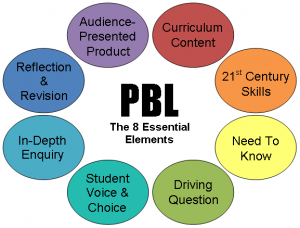
By working with PBL, students will:
- Become engaged with open-ended situations that assimilate the world of work
- Participate in groups to pinpoint what is known/ not known and the methods of finding information to help solve the given problem.
- Investigate a problem; through critical thinking and problem solving, brainstorm a list of unique solutions.
- Analyze the situation to see if the real problem is framed or if there are other problems that need to be solved.
How to Begin PBL
- Establish the learning outcomes (i.e., what is it that you want your students to really learn and to be able to do after completing the learning project).
- Find a real-world problem that is relevant to the students; often the problems are ones that students may encounter in their own life or future career.
- Discuss pertinent rules for working in groups to maximize learning success.
- Practice group processes: listening, involving others, assessing their work/peers.
- Explore different roles for students to accomplish the work that needs to be done and/or to see the problem from various perspectives depending on the problem (e.g., for a problem about pollution, different roles may be a mayor, business owner, parent, child, neighboring city government officials, etc.).
- Determine how the project will be evaluated and assessed. Most likely, both self-assessment and peer-assessment will factor into the assignment grade.
Designing Classroom Instruction
See also: Inclusive Teaching Strategies
- Take the curriculum and divide it into various units. Decide on the types of problems that your students will solve. These will be your objectives.
- Determine the specific problems that most likely have several answers; consider student interest.
- Arrange appropriate resources available to students; utilize other teaching personnel to support students where needed (e.g., media specialists to orientate students to electronic references).
- Decide on presentation formats to communicate learning (e.g., individual paper, group PowerPoint, an online blog, etc.) and appropriate grading mechanisms (e.g., rubric).
- Decide how to incorporate group participation (e.g., what percent, possible peer evaluation, etc.).
How to Orchestrate a PBL Activity
- Explain Problem-Based Learning to students: its rationale, daily instruction, class expectations, grading.
- Serve as a model and resource to the PBL process; work in-tandem through the first problem
- Help students secure various resources when needed.
- Supply ample class time for collaborative group work.
- Give feedback to each group after they share via the established format; critique the solution in quality and thoroughness. Reinforce to the students that the prior thinking and reasoning process in addition to the solution are important as well.
Teacher’s Role in PBL
See also: Flipped teaching
As previously mentioned, the teacher determines a problem that is interesting, relevant, and novel for the students. It also must be multi-faceted enough to engage students in doing research and finding several solutions. The problems stem from the unit curriculum and reflect possible use in future work situations.
- Determine a problem aligned with the course and your students. The problem needs to be demanding enough that the students most likely cannot solve it on their own. It also needs to teach them new skills. When sharing the problem with students, state it in a narrative complete with pertinent background information without excessive information. Allow the students to find out more details as they work on the problem.
- Place students in groups, well-mixed in diversity and skill levels, to strengthen the groups. Help students work successfully. One way is to have the students take on various roles in the group process after they self-assess their strengths and weaknesses.
- Support the students with understanding the content on a deeper level and in ways to best orchestrate the various stages of the problem-solving process.
The Role of the Students
See also: ADDIE model
The students work collaboratively on all facets of the problem to determine the best possible solution.
- Analyze the problem and the issues it presents. Break the problem down into various parts. Continue to read, discuss, and think about the problem.
- Construct a list of what is known about the problem. What do your fellow students know about the problem? Do they have any experiences related to the problem? Discuss the contributions expected from the team members. What are their strengths and weaknesses? Follow the rules of brainstorming (i.e., accept all answers without passing judgment) to generate possible solutions for the problem.
- Get agreement from the team members regarding the problem statement.
- Put the problem statement in written form.
- Solicit feedback from the teacher.
- Be open to changing the written statement based on any new learning that is found or feedback provided.
- Generate a list of possible solutions. Include relevant thoughts, ideas, and educated guesses as well as causes and possible ways to solve it. Then rank the solutions and select the solution that your group is most likely to perceive as the best in terms of meeting success.
- Include what needs to be known and done to solve the identified problems.
- Prioritize the various action steps.
- Consider how the steps impact the possible solutions.
- See if the group is in agreement with the timeline; if not, decide how to reach agreement.
- What resources are available to help (e.g., textbooks, primary/secondary sources, Internet).
- Determine research assignments per team members.
- Establish due dates.
- Determine how your group will present the problem solution and also identify the audience. Usually, in PBL, each group presents their solutions via a team presentation either to the class of other students or to those who are related to the problem.
- Both the process and the results of the learning activity need to be covered. Include the following: problem statement, questions, data gathered, data analysis, reasons for the solution(s) and/or any recommendations reflective of the data analysis.
- A well-stated problem and conclusion.
- The process undertaken by the group in solving the problem, the various options discussed, and the resources used.
- Your solution’s supporting documents, guests, interviews and their purpose to be convincing to your audience.
- In addition, be prepared for any audience comments and questions. Determine who will respond and if your team doesn’t know the answer, admit this and be open to looking into the question at a later date.
- Reflective thinking and transfer of knowledge are important components of PBL. This helps the students be more cognizant of their own learning and teaches them how to ask appropriate questions to address problems that need to be solved. It is important to look at both the individual student and the group effort/delivery throughout the entire process. From here, you can better determine what was learned and how to improve. The students should be asked how they can apply what was learned to a different situation, to their own lives, and to other course projects.
See also: Kirkpatrick Model: Four Levels of Learning Evaluation
I am a professor of Educational Technology. I have worked at several elite universities. I hold a PhD degree from the University of Illinois and a master's degree from Purdue University.
Similar Posts
Open source learning management systems (lms).
Learning Management Systems (LMSs) are becoming a vital part of classrooms in the 21th Century. This is a list of open source learning management systems. By open source we mean that source code of…
WebQuest: An Inquiry-oriented Approach in Learning
The rise in online learning brings renewed interest in WebQuests. As an authentic, scaffolded, and inquiry-based activity, a WebQuest is an educational superstar. It utilizes essential resources and captures the attention of the…
Screen Capture / Lecture Capture tools
Lecture/screen capture refers to any technology that allows instructors to record a lecture and make it available digitally by placing on the Web for students to watch online before or after class. Screen capture…
Definitions of Educational Technology
Educational Technology What is educational technology? There are a variety of definitions of educational technology. What is instructional design and technology? The Association for Educational Communications and Technology (AECT): Educational technology is the study…
Scaffolding in Education
What is Scaffolding? Scaffolding in instruction is when a teacher supports students throughout the learning process. The instructor gradually introduces new ideas, building on each prior step and knowledge. As students learn new…
Planning for Educational Technology Integration
Why seek out educational technology? We know that technology can enhance the teaching and learning process by providing unique opportunities. However, we also know that adoption of educational technology is a highly complex…
- Our Mission
Problem-Solving in Elementary School
Elementary students practice problem-solving and self-questioning techniques to improve reading and social and emotional learning skills.

In a school district in New Jersey, beginning in kindergarten each child is seen as a future problem solver with creative ideas that can help the world. Vince Caputo, superintendent of the Metuchen School District, explained that what drew him to the position was “a shared value for whole child education.”
Caputo’s first hire as superintendent was Rick Cohen, who works as both the district’s K–12 director of curriculum and principal of Moss Elementary School . Cohen is committed to integrating social and emotional learning (SEL) into academic curriculum and instruction by linking cognitive processes and guided self-talk.
Cohen’s first focus was kindergarten students. “I recommended Moss teachers teach just one problem-solving process to our 6-year-olds across all academic content areas and challenge students to use the same process for social problem-solving,” he explained.
Reading and Social Problem-Solving
Moss Elementary classrooms use a specific process to develop problem-solving skills focused on tending to social and interpersonal relationships. The process also concentrates on building reading skills—specifically, decoding and comprehension.
Stop, Look, and Think. Students define the problem. As they read, they look at the pictures and text for clues, searching for information and asking, “What is important and what is not?” Social problem-solving aspect: Students look for signs of feelings in others’ faces, postures, and tone of voice.
Gather Information . Next, students explore what feelings they’re having and what feelings others may be having. As they read, they look at the beginning sound of a word and ask, “What else sounds like this?” Social problem-solving aspect: Students reflect on questions such as, “What word or words describe the feeling you see or hear in others? What word describes your feeling? How do you know, and how sure are you?”
Brainstorming . Then students seek different solutions. As they read, they wonder, “Does it sound right? Does it make sense? How else could it sound to make more sense? What other sounds do those letters make?” Social problem-solving aspect: Students reflect on questions such as, “How can you solve the problem or make the situation better? What else can you think of? What else can you try? What other ideas do you have?”
Pick the Best One. Next, students evaluate the solution. While reading, they scan for smaller words they know within larger, more difficult words. They read the difficult words the way they think they sound while asking, “Will it make sense to other people?” Social problem-solving aspect: Students reflect on prompts such as, “Pick the solution that you think will be best to solve the problem. Ask yourself, ‘What will happen if I do this—for me, and for others involved?’”
Go . In the next step, students make a plan and act. They do this by rereading the text. Social problem-solving aspect: Students are asked to try out what they will say and how they will say it. They’re asked to pick a good time to do this, when they’re willing to try it.
Check . Finally, students reflect and revise. After they have read, they ponder what exactly was challenging about what they read and, based on this, decide what to do next. Social problem-solving aspect: Students reflect on questions such as, “How did it work out? Did you solve the problem? How did others feel about what happened? What did you learn? What would you do if the same thing happened again?”
You can watch the Moss Elementary Problem Solvers video and see aspects of this process in action.
The Process of Self-Questioning
Moss Elementary students and other students in the district are also taught structured self-questioning. Cohen notes, “We realized that many of our elementary students would struggle to generalize the same steps and thinking skills they previously used to figure out an unknown word in a text or resolve social conflicts to think through complex inquiries and research projects.” The solution? Teach students how to self-question, knowing they can also apply this effective strategy across contexts. The self-questioning process students use looks like this:
Stop and Think. “What’s the question?”
Gather Information. “How do I gather information? What are different sides of the issue?”
Brainstorm and Choose. “How do I select, organize, and choose the information? What are some ways to solve the problem? What’s the best choice?”
Plan and Try. “What does the plan look like? When and how can it happen? Who needs to be involved?”
Check & Revise. “How can I present the information? What did I do well? How can I improve?”
The Benefits
Since using the problem-solving and self-questioning processes, the students at Moss Elementary have had growth in their scores for the last two years on the fifth-grade English language arts PARCC tests . However, as Cohen shares, “More important than preparing our students for the tests on state standards, there is evidence that we are also preparing them for the tests of life.”
Problem Solving Method Of Teaching
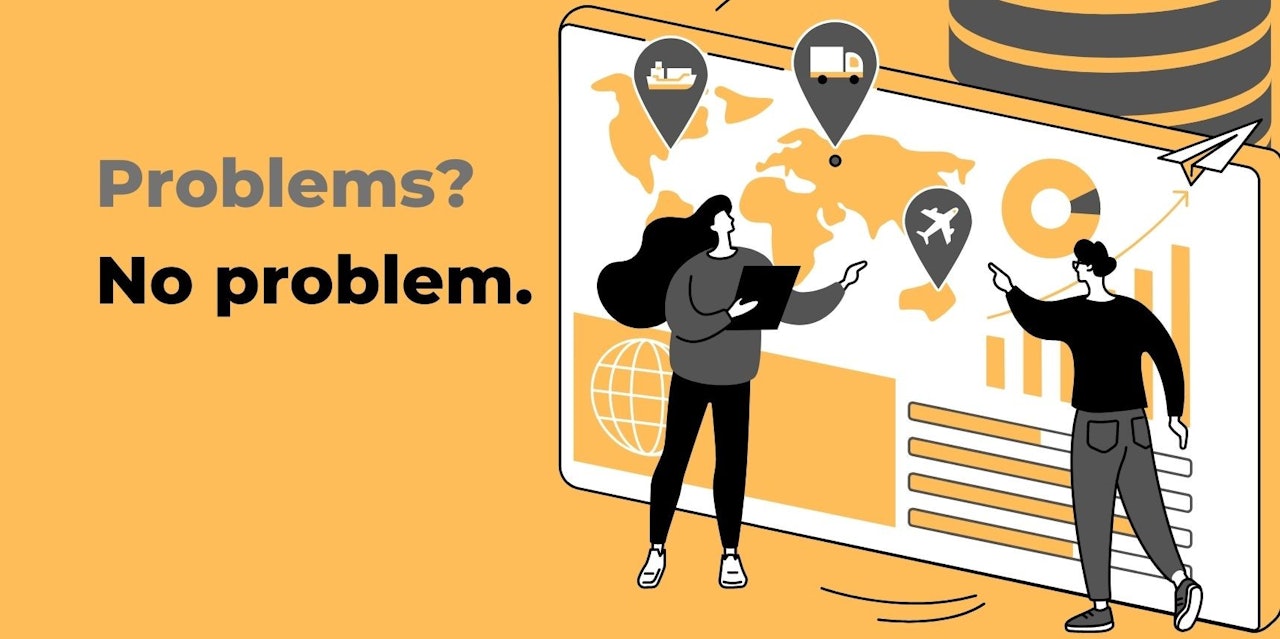
| Element | Synthesis | Example |
|---|---|---|
| Active Learning | Teaching through problem-solving allows for active learning. | Children understand the theory better by getting involved in real-world situations |
| Practice | Continuous practice is integral to problem-solving teaching. | Each new skill or concept is practiced after being learned in class. |
| Relevance | Problem-solving techniques make learning more relevant. | Real-world examples related to the topic are presented. |
| Incremental Learning | Each new topic builds on previous lessons. | Relating new problems to ones solved in previous sessions. |
| Overcome Challenges | Enhances ability to overcome real-world situations. | Children understand the application of skills learned. |
| Variety | Problem-solving allows flexibility in teaching methods. | Problems can be practical, conceptual, or theoretical. |
| Critical Thinking | Improves children's critical thinking skills. | Adding alternative paths to a solution. |
| Confidence | Boosts children's confidence in handling problems. | Children feel empowered after successfully solving a problem. |
| Adaptability | Increases adaptability to new learning situations. | Children can apply learned strategies to new problems. |
| Engagement | Problem-solving increases engagement and interest. | Children find solving real-world examples interesting. |
The problem-solving method of teaching is the learning method that allows children to learn by doing. This is because they are given examples and real-world situations so that the theory behind it can be understood better, as well as practice with each new concept or skill taught on top of what was previously learned in class before moving onto another topic at hand.
What is your preferred problem-solving technique?
Answers : - I like to brainstorm and see what works for me - I enjoy the trial and error method - I am a linear thinker
Share it with me by commenting.
For example, while solving a problem, the child may encounter terms he has not studied yet. These will further help him understand their use in context while developing his vocabulary. At the same time, being able to practice math concepts by tapping into daily activities helps an individual retain these skills better.
One way this type of teaching is applied for younger students particularly is through games played during lessons. By allowing them to become comfortable with the concepts taught through these games, they can put their knowledge into use later on. This is done by developing thinking processes that precede an action or behavior. These games can be used by teachers for different subjects including science and language.
For younger students still, the method of teaching using real-life examples helps them understand better. Through this, it becomes easier for them to relate what they learned in school with terms used outside of school settings so that the information sticks better than if all they were given were theoretical definitions. For instance, instead of just studying photosynthesis as part of biology lessons, children are asked to imagine plants growing inside a dark room because there is no sunlight present. When questioned about the plants, children will be able to recall photosynthesis more easily because they were able to see its importance in real life.
Despite being given specific examples, the act of solving problems helps students think for themselves. They learn how to approach situations and predict outcomes based on what they already know about concepts or ideas taught in class including the use of various skills they have acquired over time. These include problem-solving strategies like using drawings when describing a solution or asking advice if they are stuck to unlock solutions that would otherwise go beyond their reach.
Teachers need to point out in advance which method will be used for any particular lesson before having children engage with it. By doing this, individuals can prepare themselves mentally for what is to come. This is especially true for students who have difficulty with a particular subject. In these cases, the teacher can help them get started by providing a worked example for reference or breaking the problem down into manageable chunks that are easier to digest.
JIT (Just-in-Time): A Comprehensive Examination of its Strategic Impact
The Wisdom of Jefferson: Moving, Doing, Thinking
Root Cause Tree Analysis: Insights to Forensic Decision Making
Hazard Analysis: A Comprehensive Approach for Risk Evaluation
Ultimately, the goal of teaching using a problem-solving method is to give children the opportunity to think for themselves and to be able to do so in different contexts. Doing this helps foster independent learners who can utilize the skills they acquired in school for future endeavors.
The problem-solving method of teaching allows children to learn by doing. This is because they are given examples and real-world situations so that the theory behind it can be understood better, as practice with each new concept or skill taught on top of what was previously learned in class before moving onto another topic at hand.
One way this type of teaching is applied for younger students particularly is through games played during lessons. By allowing them to become comfortable with the concepts taught through these games, they are able to put their knowledge into use later on. This is done by developing thinking processes that precede an action or behavior. These games can be used by teachers for different subjects including science and language.
For instance, a teacher may ask students to imagine they are plants in a dark room because there is no sunlight present. When questioned about the plants, children will be able to recall photosynthesis more easily because they were able to see its importance in real life.
It is important for teachers to point out in advance which method will be used for any particular lesson before having children engage with it. By doing this, individuals can prepare themselves mentally for what is to come. This is especially true for students who have difficulty with a particular subject. In these cases, the teacher can help them get started by providing a worked example for reference or breaking the problem down into manageable chunks that are easier to digest.
lesson before having children engage with it. By doing this, individuals can prepare themselves mentally for what is to come. This is especially true for students who have difficulty with a particular subject. In these cases, the teacher can help them get started by providing a worked example for reference or breaking the problem down into manageable chunks that are easier to digest.
The teacher should have a few different ways to solve the problem.
For example, the teacher can provide a worked example for reference or break down the problem into chunks that are easier to digest.
The goal of teaching using a problem-solving method is to give children the opportunity to think for themselves and to be able to do so in different contexts. Successful problem solving allows children to become comfortable with concepts taught through games that develop thinking processes that precede an action or behavior.
Introduce the problem
The problem solving method of teaching is a popular approach to learning that allows students to understand new concepts by doing. This approach provides students with examples and real-world situations, so they can see how the theory behind a concept or skill works in practice. In addition, students are given practice with each new concept or skill taught, before moving on to the next topic. This helps them learn and retain the information better.
Explain why the problem solving method of teaching is effective.
The problem solving method of teaching is effective because it allows students to learn by doing. This means they can see how the theory behind a concept or skill works in practice, which helps them understand and remember the information better. This would not be possible if they are only told about the new concept or skill, or read a textbook to learn on their own. Since students can see how the theory works in practice through examples and real-world situations, the information is easier for them to understand.
List some advantages of using the problem solving method of teaching.
Some advantages of using the problem solving method of teaching are that it helps students retain information better since they are able to practice with each new concept or skill taught until they master it before moving on to another topic. This also allows them to learn by doing so they will have hands-on experience with facts which helps them remember important facts faster rather than just hearing about it or reading about it on their own. Furthermore, this teaching method is beneficial for students of all ages and can be adapted to different subjects making it an approach that is versatile and easily used in a classroom setting. Lastly, the problem solving method of teaching presents new information in a way that is easy to understand so students are not overwhelmed with complex material.
The problem solving method of teaching is an effective way for students to learn new concepts and skills. By providing them with examples and real-world situations, they can see how the theory behind a concept or skill works in practice. In addition, students are given practice with each new concept or skill taught, before moving on to the next topic. This them learn and retain the information better.
What has been your experience with adopting a problem-solving teaching method?
How do you feel the usefulness of your lesson plans changed since adopting this method?
What was one of your most successful attempts in using this technique to teach students, and why do you believe it was so successful?
Were there any obstacles when trying to incorporate this technique into your class?
Did it take a while for all students to get used to the new type of teaching style before they felt comfortable enough to participate in discussions and ask questions about their newly acquired knowledge?
What are your thoughts on this method?
“I have had the opportunity to work in several districts, including one where they used problem solving for all subjects. I never looked back after that experience--it was exciting and motivating for students and teachers alike."
"The problem solving method of teaching is great because it makes my subject matter more interesting with hands-on activities."
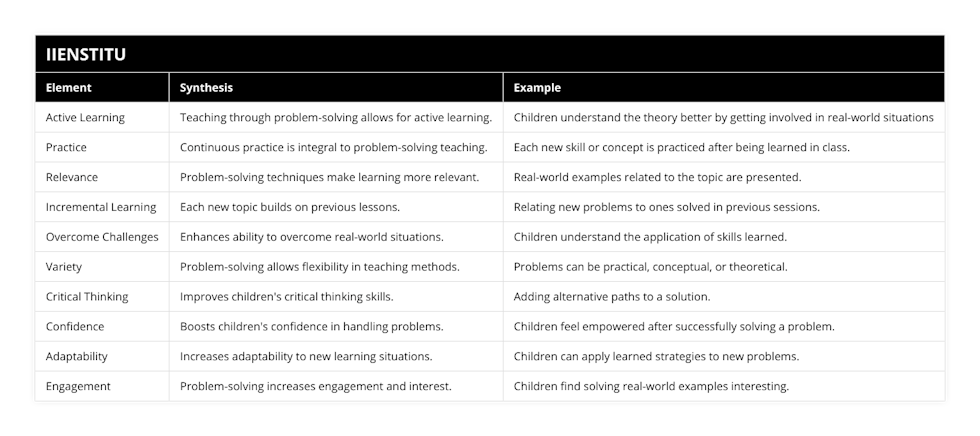
What is the role of educators in facilitating problem-solving method of teaching?
Role of Educators in Facilitating Problem-Solving Understanding the Problem-Solving Method The problem-solving method of teaching encourages students to actively engage their critical thinking skills to analyze and seek solutions to real-world problems. As such, educators play a crucial part in facilitating this learning style to ensure the effective attainment of desired skills. Encouraging Collaboration and Communication One of the ways educators can facilitate problem-solving is by promoting collaboration and communication among students. Working as a team allows students to share diverse perspectives while considering multiple solutions, thereby fostering an open-minded and inclusive environment that is crucial for effective problem-solving. Creating a Safe Space for Failure Educators must recognize that failure is an integral component of the learning process in a problem-solving method. By establishing a safe environment that allows students to fail without facing judgment or embarrassment, teachers enable students to develop perseverance, resilience, and an enhanced ability to learn from mistakes. Designing Relevant and Engaging Problems The selection and design of appropriate problems contribute significantly to the success of the problem-solving method of teaching. Educators should focus on presenting issues that are relevant, engaging, and age-appropriate, thereby sparking curiosity and interest amongst students, which further improves their problem-solving abilities. Scaffolding Learning Scaffolding is essential in the problem-solving method for providing adequate support when required. Teachers need to break down complex problems into smaller, manageable steps, and gradually remove support as students develop the necessary skills, thus promoting their self-reliance and independent thinking. Providing Constructive Feedback Constructive feedback from educators is invaluable in facilitating the problem-solving method of teaching, as it enables students to reflect on their progress, recognize areas for improvement, and actively develop their critical thinking and problem-solving abilities. In conclusion, the role of educators in facilitating the problem-solving method of teaching comprises promoting collaboration, creating a safe space for failure, designing relevant problems, scaffolding learning, and providing constructive feedback. By integrating these elements, educators can help students develop essential life-long skills and effectively navigate the complex world they will experience.
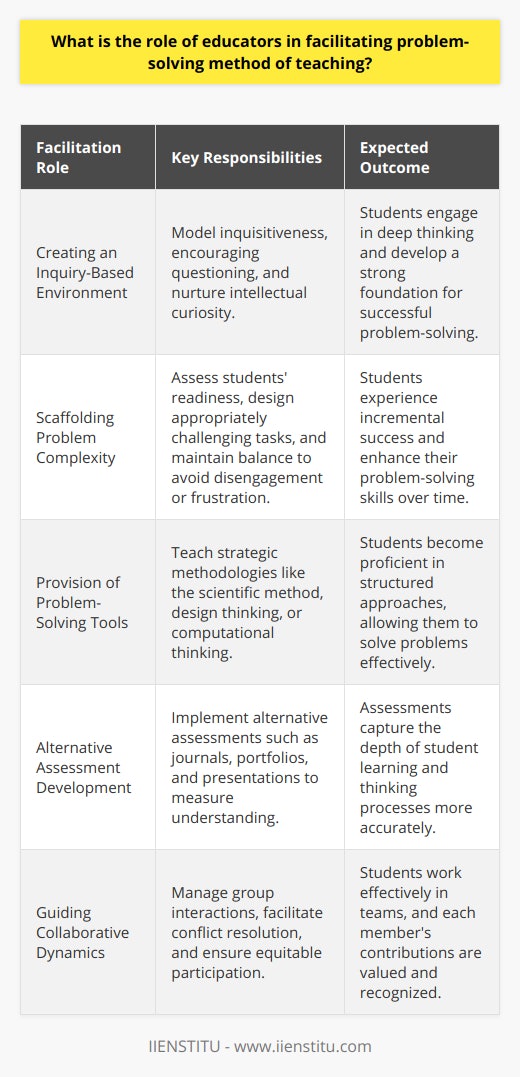
Can interdisciplinary approaches be incorporated into problem-solving teaching methods, and if so, how?
Interdisciplinary Approaches in Problem-Solving Teaching Methods Integration of Interdisciplinary Approaches Incorporating interdisciplinary approaches into problem-solving teaching methods can be achieved by integrating various subject areas when presenting complex problems that require students to draw from different fields of knowledge. By doing so, learners will develop a deeper understanding of the interconnectedness of various disciplines and improve their problem-solving skills. Project-Based Learning Activities Implementing project-based learning activities in the classroom allows students to work collaboratively on real-world problems. By involving learners in tasks that necessitate the integration of diverse subjects, they develop the ability to transfer skills acquired in one context to novel situations, thereby expanding their problem-solving abilities. Role of Teachers in Interdisciplinary Teaching Teachers play a crucial role in the successful incorporation of interdisciplinary methods in problem-solving teaching. They must be prepared to facilitate student-centered learning and engage in ongoing professional development tailored towards interdisciplinary education. In doing so, educators can create inclusive learning environments that encourage individualized discovery and the application of diverse perspectives to solve complex problems. Benefits of Interdisciplinary Teaching Methods Adopting interdisciplinary teaching methods in problem-solving education not only enhances students' problem-solving abilities but also fosters the development of critical thinking, creativity, and collaboration. These essential skills enable learners to navigate and adapt to an increasingly interconnected world and have been shown to contribute to students' academic and professional success. In conclusion, incorporating interdisciplinary approaches into problem-solving teaching methods can be achieved through the integration of various subject areas, implementing project-based learning activities, and the active role of teachers in interdisciplinary education. These methods benefit students by developing problem-solving skills, critical thinking, creativity, and collaboration, preparing them for future success in an interconnected world.
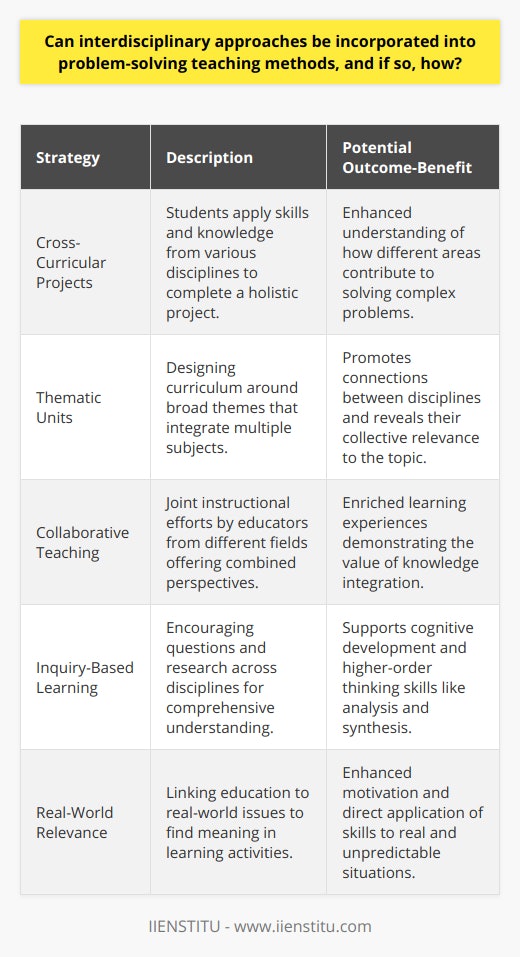
In what ways can technology be integrated into the problem-solving method of instruction?
**Role of Technology in Problem-Solving Instruction** Technology can be integrated into the problem-solving method of instruction by enhancing student engagement, promoting collaboration, and supporting personalized learning. **Enhancing Student Engagement** One way technology supports the problem-solving method is by increasing students' interest through interactive and dynamic tools. For instance, digital simulations and educational games can help students develop critical thinking and problem-solving skills in a fun, engaging manner. These tools provide real-world contexts and immediate feedback, allowing students to experiment, take risks, and learn from their mistakes. **Promoting Collaboration** Technology also promotes collaboration among students, as online platforms facilitate communication and cooperation. Utilizing tools like video conferencing and shared workspaces, students can collaborate on group projects, discuss ideas, and solve problems together. This collaborative approach fosters a sense of community, mutual support, and collective problem-solving. Moreover, it helps students develop essential interpersonal skills, such as teamwork and communication, which are crucial in today's workplaces. **Supporting Personalized Learning** Finally, technology can be used to provide personalized learning experiences tailored to individual learners' needs, interests, and abilities. With access to adaptive learning platforms or online resources, students can progress at their own pace, focus on areas where they need improvement, and explore topics that interest them. This kind of personalized approach allows instructors to identify areas where students struggle and offer targeted support, enhancing the problem-solving learning experience. In conclusion, integrating technology into the problem-solving method of instruction can improve the learning process in various ways. By fostering student engagement, promoting collaboration, and facilitating personalized learning experiences, technology can be employed as a valuable resource to develop students' problem-solving skills effectively.
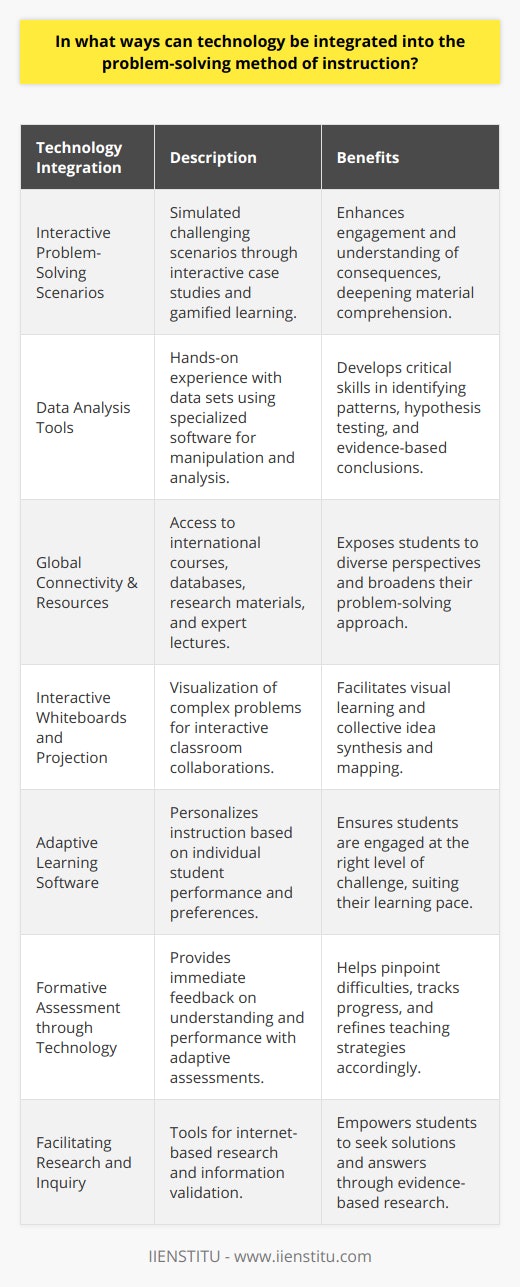
I graduated from the Family and Consumption Sciences Department at Hacettepe University. I hold certificates in blogging and personnel management. I have a Master's degree in English and have lived in the US for three years.
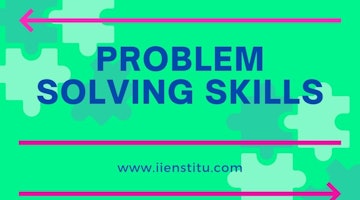
What are Problem Solving Skills?

How To Solve The Problems? Practical Problem Solving Skills
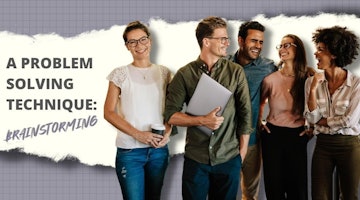
A Problem Solving Method: Brainstorming
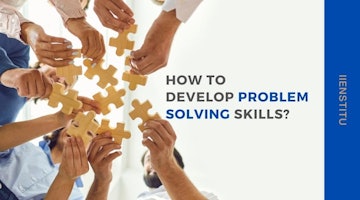
How To Develop Problem Solving Skills?

Want to create or adapt books like this? Learn more about how Pressbooks supports open publishing practices.
5 Teaching Mathematics Through Problem Solving
Janet Stramel

In his book “How to Solve It,” George Pólya (1945) said, “One of the most important tasks of the teacher is to help his students. This task is not quite easy; it demands time, practice, devotion, and sound principles. The student should acquire as much experience of independent work as possible. But if he is left alone with his problem without any help, he may make no progress at all. If the teacher helps too much, nothing is left to the student. The teacher should help, but not too much and not too little, so that the student shall have a reasonable share of the work.” (page 1)
What is a problem in mathematics? A problem is “any task or activity for which the students have no prescribed or memorized rules or methods, nor is there a perception by students that there is a specific ‘correct’ solution method” (Hiebert, et. al., 1997). Problem solving in mathematics is one of the most important topics to teach; learning to problem solve helps students develop a sense of solving real-life problems and apply mathematics to real world situations. It is also used for a deeper understanding of mathematical concepts. Learning “math facts” is not enough; students must also learn how to use these facts to develop their thinking skills.
According to NCTM (2010), the term “problem solving” refers to mathematical tasks that have the potential to provide intellectual challenges for enhancing students’ mathematical understanding and development. When you first hear “problem solving,” what do you think about? Story problems or word problems? Story problems may be limited to and not “problematic” enough. For example, you may ask students to find the area of a rectangle, given the length and width. This type of problem is an exercise in computation and can be completed mindlessly without understanding the concept of area. Worthwhile problems includes problems that are truly problematic and have the potential to provide contexts for students’ mathematical development.
There are three ways to solve problems: teaching for problem solving, teaching about problem solving, and teaching through problem solving.
Teaching for problem solving begins with learning a skill. For example, students are learning how to multiply a two-digit number by a one-digit number, and the story problems you select are multiplication problems. Be sure when you are teaching for problem solving, you select or develop tasks that can promote the development of mathematical understanding.
Teaching about problem solving begins with suggested strategies to solve a problem. For example, “draw a picture,” “make a table,” etc. You may see posters in teachers’ classrooms of the “Problem Solving Method” such as: 1) Read the problem, 2) Devise a plan, 3) Solve the problem, and 4) Check your work. There is little or no evidence that students’ problem-solving abilities are improved when teaching about problem solving. Students will see a word problem as a separate endeavor and focus on the steps to follow rather than the mathematics. In addition, students will tend to use trial and error instead of focusing on sense making.
Teaching through problem solving focuses students’ attention on ideas and sense making and develops mathematical practices. Teaching through problem solving also develops a student’s confidence and builds on their strengths. It allows for collaboration among students and engages students in their own learning.
Consider the following worthwhile-problem criteria developed by Lappan and Phillips (1998):
- The problem has important, useful mathematics embedded in it.
- The problem requires high-level thinking and problem solving.
- The problem contributes to the conceptual development of students.
- The problem creates an opportunity for the teacher to assess what his or her students are learning and where they are experiencing difficulty.
- The problem can be approached by students in multiple ways using different solution strategies.
- The problem has various solutions or allows different decisions or positions to be taken and defended.
- The problem encourages student engagement and discourse.
- The problem connects to other important mathematical ideas.
- The problem promotes the skillful use of mathematics.
- The problem provides an opportunity to practice important skills.
Of course, not every problem will include all of the above. Sometimes, you will choose a problem because your students need an opportunity to practice a certain skill.
Key features of a good mathematics problem includes:
- It must begin where the students are mathematically.
- The feature of the problem must be the mathematics that students are to learn.
- It must require justifications and explanations for both answers and methods of solving.

Problem solving is not a neat and orderly process. Think about needlework. On the front side, it is neat and perfect and pretty.

But look at the b ack.
It is messy and full of knots and loops. Problem solving in mathematics is also like this and we need to help our students be “messy” with problem solving; they need to go through those knots and loops and learn how to solve problems with the teacher’s guidance.
When you teach through problem solving , your students are focused on ideas and sense-making and they develop confidence in mathematics!
Mathematics Tasks and Activities that Promote Teaching through Problem Solving

Choosing the Right Task
Selecting activities and/or tasks is the most significant decision teachers make that will affect students’ learning. Consider the following questions:
- Teachers must do the activity first. What is problematic about the activity? What will you need to do BEFORE the activity and AFTER the activity? Additionally, think how your students would do the activity.
- What mathematical ideas will the activity develop? Are there connections to other related mathematics topics, or other content areas?
- Can the activity accomplish your learning objective/goals?

Low Floor High Ceiling Tasks
By definition, a “ low floor/high ceiling task ” is a mathematical activity where everyone in the group can begin and then work on at their own level of engagement. Low Floor High Ceiling Tasks are activities that everyone can begin and work on based on their own level, and have many possibilities for students to do more challenging mathematics. One gauge of knowing whether an activity is a Low Floor High Ceiling Task is when the work on the problems becomes more important than the answer itself, and leads to rich mathematical discourse [Hover: ways of representing, thinking, talking, agreeing, and disagreeing; the way ideas are exchanged and what the ideas entail; and as being shaped by the tasks in which students engage as well as by the nature of the learning environment].
The strengths of using Low Floor High Ceiling Tasks:
- Allows students to show what they can do, not what they can’t.
- Provides differentiation to all students.
- Promotes a positive classroom environment.
- Advances a growth mindset in students
- Aligns with the Standards for Mathematical Practice
Examples of some Low Floor High Ceiling Tasks can be found at the following sites:
- YouCubed – under grades choose Low Floor High Ceiling
- NRICH Creating a Low Threshold High Ceiling Classroom
- Inside Mathematics Problems of the Month
Math in 3-Acts
Math in 3-Acts was developed by Dan Meyer to spark an interest in and engage students in thought-provoking mathematical inquiry. Math in 3-Acts is a whole-group mathematics task consisting of three distinct parts:
Act One is about noticing and wondering. The teacher shares with students an image, video, or other situation that is engaging and perplexing. Students then generate questions about the situation.
In Act Two , the teacher offers some information for the students to use as they find the solutions to the problem.
Act Three is the “reveal.” Students share their thinking as well as their solutions.
“Math in 3 Acts” is a fun way to engage your students, there is a low entry point that gives students confidence, there are multiple paths to a solution, and it encourages students to work in groups to solve the problem. Some examples of Math in 3-Acts can be found at the following websites:
- Dan Meyer’s Three-Act Math Tasks
- Graham Fletcher3-Act Tasks ]
- Math in 3-Acts: Real World Math Problems to Make Math Contextual, Visual and Concrete
Number Talks
Number talks are brief, 5-15 minute discussions that focus on student solutions for a mental math computation problem. Students share their different mental math processes aloud while the teacher records their thinking visually on a chart or board. In addition, students learn from each other’s strategies as they question, critique, or build on the strategies that are shared.. To use a “number talk,” you would include the following steps:
- The teacher presents a problem for students to solve mentally.
- Provide adequate “ wait time .”
- The teacher calls on a students and asks, “What were you thinking?” and “Explain your thinking.”
- For each student who volunteers to share their strategy, write their thinking on the board. Make sure to accurately record their thinking; do not correct their responses.
- Invite students to question each other about their strategies, compare and contrast the strategies, and ask for clarification about strategies that are confusing.
“Number Talks” can be used as an introduction, a warm up to a lesson, or an extension. Some examples of Number Talks can be found at the following websites:
- Inside Mathematics Number Talks
- Number Talks Build Numerical Reasoning

Saying “This is Easy”
“This is easy.” Three little words that can have a big impact on students. What may be “easy” for one person, may be more “difficult” for someone else. And saying “this is easy” defeats the purpose of a growth mindset classroom, where students are comfortable making mistakes.
When the teacher says, “this is easy,” students may think,
- “Everyone else understands and I don’t. I can’t do this!”
- Students may just give up and surrender the mathematics to their classmates.
- Students may shut down.
Instead, you and your students could say the following:
- “I think I can do this.”
- “I have an idea I want to try.”
- “I’ve seen this kind of problem before.”
Tracy Zager wrote a short article, “This is easy”: The Little Phrase That Causes Big Problems” that can give you more information. Read Tracy Zager’s article here.
Using “Worksheets”
Do you want your students to memorize concepts, or do you want them to understand and apply the mathematics for different situations?
What is a “worksheet” in mathematics? It is a paper and pencil assignment when no other materials are used. A worksheet does not allow your students to use hands-on materials/manipulatives [Hover: physical objects that are used as teaching tools to engage students in the hands-on learning of mathematics]; and worksheets are many times “naked number” with no context. And a worksheet should not be used to enhance a hands-on activity.
Students need time to explore and manipulate materials in order to learn the mathematics concept. Worksheets are just a test of rote memory. Students need to develop those higher-order thinking skills, and worksheets will not allow them to do that.
One productive belief from the NCTM publication, Principles to Action (2014), states, “Students at all grade levels can benefit from the use of physical and virtual manipulative materials to provide visual models of a range of mathematical ideas.”
You may need an “activity sheet,” a “graphic organizer,” etc. as you plan your mathematics activities/lessons, but be sure to include hands-on manipulatives. Using manipulatives can
- Provide your students a bridge between the concrete and abstract
- Serve as models that support students’ thinking
- Provide another representation
- Support student engagement
- Give students ownership of their own learning.
Adapted from “ The Top 5 Reasons for Using Manipulatives in the Classroom ”.
any task or activity for which the students have no prescribed or memorized rules or methods, nor is there a perception by students that there is a specific ‘correct’ solution method
should be intriguing and contain a level of challenge that invites speculation and hard work, and directs students to investigate important mathematical ideas and ways of thinking toward the learning
involves teaching a skill so that a student can later solve a story problem
when we teach students how to problem solve
teaching mathematics content through real contexts, problems, situations, and models
a mathematical activity where everyone in the group can begin and then work on at their own level of engagement
20 seconds to 2 minutes for students to make sense of questions
Mathematics Methods for Early Childhood Copyright © 2021 by Janet Stramel is licensed under a Creative Commons Attribution 4.0 International License , except where otherwise noted.

Share This Book
Problem-Solving

| Add to Folder | |
|---|---|
| creative writing | |
| children's book | |
| activities | |
| classroom tools | |
| language arts and writing | |
| vocabulary |
Jabberwocky
Problem-solving is the ability to identify and solve problems by applying appropriate skills systematically.
Problem-solving is a process—an ongoing activity in which we take what we know to discover what we don't know. It involves overcoming obstacles by generating hypo-theses, testing those predictions, and arriving at satisfactory solutions.
Problem-solving involves three basic functions:
Seeking information
Generating new knowledge
Making decisions
Problem-solving is, and should be, a very real part of the curriculum. It presupposes that students can take on some of the responsibility for their own learning and can take personal action to solve problems, resolve conflicts, discuss alternatives, and focus on thinking as a vital element of the curriculum. It provides students with opportunities to use their newly acquired knowledge in meaningful, real-life activities and assists them in working at higher levels of thinking (see Levels of Questions ).
Here is a five-stage model that most students can easily memorize and put into action and which has direct applications to many areas of the curriculum as well as everyday life:
Expert Opinion
Here are some techniques that will help students understand the nature of a problem and the conditions that surround it:
- List all related relevant facts.
- Make a list of all the given information.
- Restate the problem in their own words.
- List the conditions that surround a problem.
- Describe related known problems.
It's Elementary
For younger students, illustrations are helpful in organizing data, manipulating information, and outlining the limits of a problem and its possible solution(s). Students can use drawings to help them look at a problem from many different perspectives.
Understand the problem. It's important that students understand the nature of a problem and its related goals. Encourage students to frame a problem in their own words.
Describe any barriers. Students need to be aware of any barriers or constraints that may be preventing them from achieving their goal. In short, what is creating the problem? Encouraging students to verbalize these impediments is always an important step.
Identify various solutions. After the nature and parameters of a problem are understood, students will need to select one or more appropriate strategies to help resolve the problem. Students need to understand that they have many strategies available to them and that no single strategy will work for all problems. Here are some problem-solving possibilities:
Create visual images. Many problem-solvers find it useful to create “mind pictures” of a problem and its potential solutions prior to working on the problem. Mental imaging allows the problem-solvers to map out many dimensions of a problem and “see” it clearly.
Guesstimate. Give students opportunities to engage in some trial-and-error approaches to problem-solving. It should be understood, however, that this is not a singular approach to problem-solving but rather an attempt to gather some preliminary data.
Create a table. A table is an orderly arrangement of data. When students have opportunities to design and create tables of information, they begin to understand that they can group and organize most data relative to a problem.
Use manipulatives. By moving objects around on a table or desk, students can develop patterns and organize elements of a problem into recognizable and visually satisfying components.
Work backward. It's frequently helpful for students to take the data presented at the end of a problem and use a series of computations to arrive at the data presented at the beginning of the problem.
Look for a pattern. Looking for patterns is an important problem-solving strategy because many problems are similar and fall into predictable patterns. A pattern, by definition, is a regular, systematic repetition and may be numerical, visual, or behavioral.
Create a systematic list. Recording information in list form is a process used quite frequently to map out a plan of attack for defining and solving problems. Encourage students to record their ideas in lists to determine regularities, patterns, or similarities between problem elements.
Try out a solution. When working through a strategy or combination of strategies, it will be important for students to …
Keep accurate and up-to-date records of their thoughts, proceedings, and procedures. Recording the data collected, the predictions made, and the strategies used is an important part of the problem solving process.
Try to work through a selected strategy or combination of strategies until it becomes evident that it's not working, it needs to be modified, or it is yielding inappropriate data. As students become more proficient problem-solvers, they should feel comfortable rejecting potential strategies at any time during their quest for solutions.
Monitor with great care the steps undertaken as part of a solution. Although it might be a natural tendency for students to “rush” through a strategy to arrive at a quick answer, encourage them to carefully assess and monitor their progress.
Feel comfortable putting a problem aside for a period of time and tackling it at a later time. For example, scientists rarely come up with a solution the first time they approach a problem. Students should also feel comfortable letting a problem rest for a while and returning to it later.
Evaluate the results. It's vitally important that students have multiple opportunities to assess their own problem-solving skills and the solutions they generate from using those skills. Frequently, students are overly dependent upon teachers to evaluate their performance in the classroom. The process of self-assessment is not easy, however. It involves risk-taking, self-assurance, and a certain level of independence. But it can be effectively promoted by asking students questions such as “How do you feel about your progress so far?” “Are you satisfied with the results you obtained?” and “Why do you believe this is an appropriate response to the problem?”
Featured High School Resources

Related Resources

About the author

TeacherVision Editorial Staff
The TeacherVision editorial team is comprised of teachers, experts, and content professionals dedicated to bringing you the most accurate and relevant information in the teaching space.


ChatGPT for Teachers
Trauma-informed practices in schools, teacher well-being, cultivating diversity, equity, & inclusion, integrating technology in the classroom, social-emotional development, covid-19 resources, invest in resilience: summer toolkit, civics & resilience, all toolkits, degree programs, trauma-informed professional development, teacher licensure & certification, how to become - career information, classroom management, instructional design, lifestyle & self-care, online higher ed teaching, current events, 5 problem-solving activities for the classroom.

Problem-solving skills are necessary in all areas of life, and classroom problem solving activities can be a great way to get students prepped and ready to solve real problems in real life scenarios. Whether in school, work or in their social relationships, the ability to critically analyze a problem, map out all its elements and then prepare a workable solution is one of the most valuable skills one can acquire in life.
Educating your students about problem solving skills from an early age in school can be facilitated through classroom problem solving activities. Such endeavors encourage cognitive as well as social development, and can equip students with the tools they’ll need to address and solve problems throughout the rest of their lives. Here are five classroom problem solving activities your students are sure to benefit from as well as enjoy doing:
1. Brainstorm bonanza
Having your students create lists related to whatever you are currently studying can be a great way to help them to enrich their understanding of a topic while learning to problem-solve. For example, if you are studying a historical, current or fictional event that did not turn out favorably, have your students brainstorm ways that the protagonist or participants could have created a different, more positive outcome. They can brainstorm on paper individually or on a chalkboard or white board in front of the class.
2. Problem-solving as a group
Have your students create and decorate a medium-sized box with a slot in the top. Label the box “The Problem-Solving Box.” Invite students to anonymously write down and submit any problem or issue they might be having at school or at home, ones that they can’t seem to figure out on their own. Once or twice a week, have a student draw one of the items from the box and read it aloud. Then have the class as a group figure out the ideal way the student can address the issue and hopefully solve it.
3. Clue me in
This fun detective game encourages problem-solving, critical thinking and cognitive development. Collect a number of items that are associated with a specific profession, social trend, place, public figure, historical event, animal, etc. Assemble actual items (or pictures of items) that are commonly associated with the target answer. Place them all in a bag (five-10 clues should be sufficient.) Then have a student reach into the bag and one by one pull out clues. Choose a minimum number of clues they must draw out before making their first guess (two- three). After this, the student must venture a guess after each clue pulled until they guess correctly. See how quickly the student is able to solve the riddle.
4. Survivor scenarios
Create a pretend scenario for students that requires them to think creatively to make it through. An example might be getting stranded on an island, knowing that help will not arrive for three days. The group has a limited amount of food and water and must create shelter from items around the island. Encourage working together as a group and hearing out every child that has an idea about how to make it through the three days as safely and comfortably as possible.
5. Moral dilemma
Create a number of possible moral dilemmas your students might encounter in life, write them down, and place each item folded up in a bowl or bag. Some of the items might include things like, “I saw a good friend of mine shoplifting. What should I do?” or “The cashier gave me an extra $1.50 in change after I bought candy at the store. What should I do?” Have each student draw an item from the bag one by one, read it aloud, then tell the class their answer on the spot as to how they would handle the situation.
Classroom problem solving activities need not be dull and routine. Ideally, the problem solving activities you give your students will engage their senses and be genuinely fun to do. The activities and lessons learned will leave an impression on each child, increasing the likelihood that they will take the lesson forward into their everyday lives.
You may also like to read
- Classroom Activities for Introverted Students
- Activities for Teaching Tolerance in the Classroom
- 5 Problem-Solving Activities for Elementary Classrooms
- 10 Ways to Motivate Students Outside the Classroom
- Motivating Introverted Students to Excel in the Classroom
- How to Engage Gifted and Talented Students in the Classroom

Categorized as: Tips for Teachers and Classroom Resources
Tagged as: Assessment Tools , Engaging Activities
- Online & Campus Doctorate (EdD) in Higher Edu...
- Degrees and Certificates for Teachers & Educa...
- Programming Teacher: Job Description and Sala...
- Grades 6-12
- School Leaders
Get our FREE 'Meet the Teacher' bundle! 👩🏻🏫
44 Powerful Instructional Strategies Examples for Every Classroom
So many ways to help students learn!
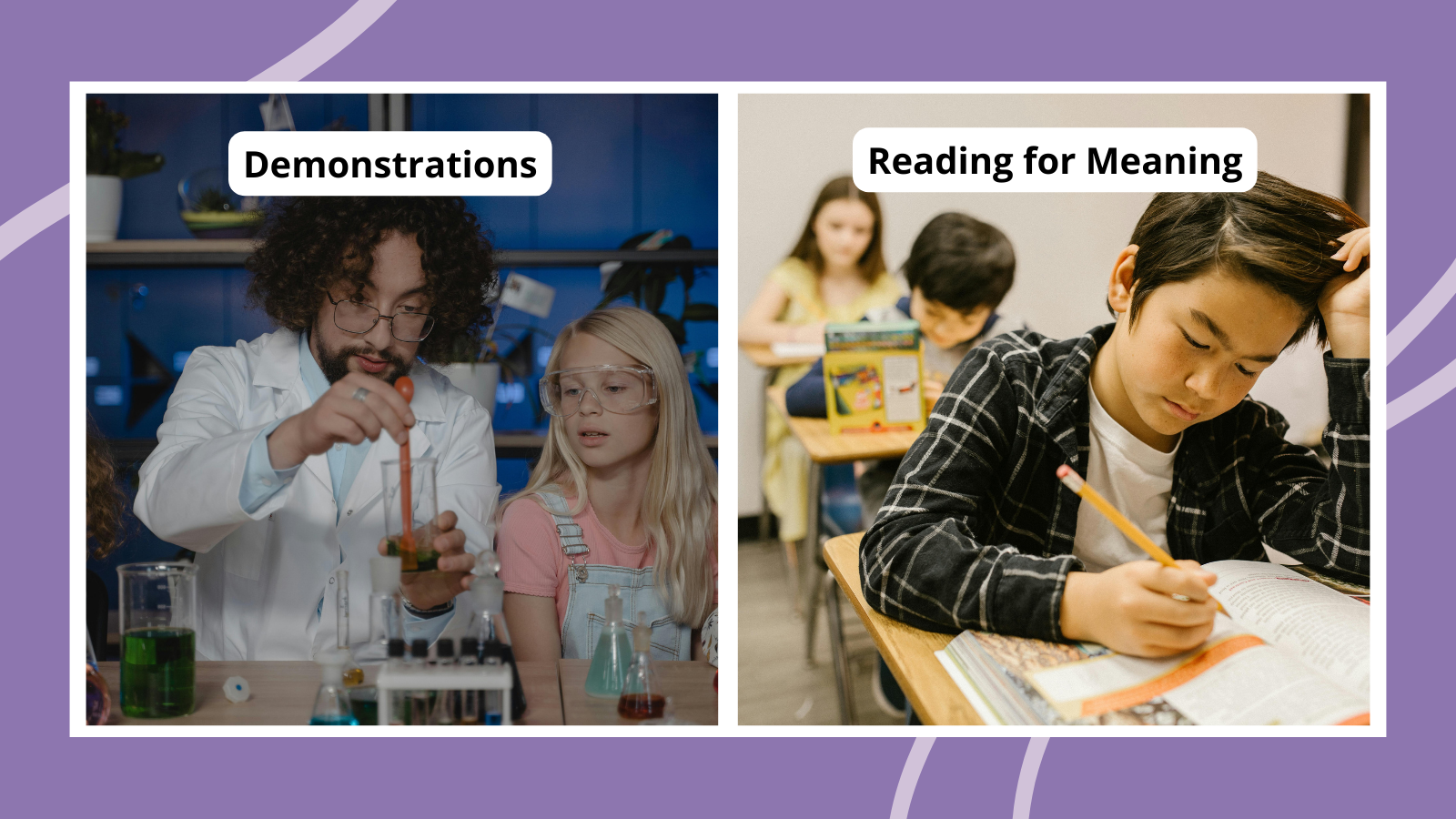
Looking for some new ways to teach and learn in your classroom? This roundup of instructional strategies examples includes methods that will appeal to all learners and work for any teacher.
What are instructional strategies?
In the simplest of terms, instructional strategies are the methods teachers use to achieve learning objectives. In other words, pretty much every learning activity you can think of is an example of an instructional strategy. They’re also known as teaching strategies and learning strategies.
The more instructional strategies a teacher has in their tool kit, the more they’re able to reach all of their students. Different types of learners respond better to various strategies, and some topics are best taught with one strategy over another. Usually, teachers use a wide array of strategies across a single lesson. This gives all students a chance to play to their strengths and ensures they have a deeper connection to the material.
There are a lot of different ways of looking at instructional strategies. One of the most common breaks them into five basic types. It’s important to remember that many learning activities fall into more than one of these categories, and teachers rarely use one type of strategy alone. The key is to know when a strategy can be most effective, for the learners or for the learning objective. Here’s a closer look at the five basic types, with instructional strategies examples for each.
Direct Instruction Instructional Strategies Examples
Direct instruction can also be called “teacher-led instruction,” and it’s exactly what it sounds like. The teacher provides the information, while the students watch, listen, and learn. Students may participate by answering questions asked by the teacher or practicing a skill under their supervision. This is a very traditional form of teaching, and one that can be highly effective when you need to provide information or teach specific skills.
This method gets a lot of flack these days for being “boring” or “old-fashioned.” It’s true that you don’t want it to be your only instructional strategy, but short lectures are still very effective learning tools. This type of direct instruction is perfect for imparting specific detailed information or teaching a step-by-step process. And lectures don’t have to be boring—just look at the success of TED Talks .
Didactic Questioning
These are often paired with other direct instruction methods like lecturing. The teacher asks questions to determine student understanding of the material. They’re often questions that start with “who,” “what,” “where,” and “when.”
Demonstration
In this direct instruction method, students watch as a teacher demonstrates an action or skill. This might be seeing a teacher solving a math problem step-by-step, or watching them demonstrate proper handwriting on the whiteboard. Usually, this is followed by having students do hands-on practice or activities in a similar manner.
Drill & Practice
If you’ve ever used flash cards to help kids practice math facts or had your whole class chant the spelling of a word out loud, you’ve used drill & practice. It’s another one of those traditional instructional strategies examples. When kids need to memorize specific information or master a step-by-step skill, drill & practice really works.
Indirect Instruction Instructional Strategies Examples
This form of instruction is learner-led and helps develop higher-order thinking skills. Teachers guide and support, but students drive the learning through reading, research, asking questions, formulating ideas and opinions, and more. This method isn’t ideal when you need to teach detailed information or a step-by-step process. Instead, use it to develop critical thinking skills , especially when more than one solution or opinion is valid.
Problem-Solving
In this indirect learning method, students work their way through a problem to find a solution. Along the way, they must develop the knowledge to understand the problem and use creative thinking to solve it. STEM challenges are terrific examples of problem-solving instructional strategies.
Project-Based Learning
When kids participate in true project-based learning, they’re learning through indirect and experiential strategies. As they work to find solutions to a real-world problem, they develop critical thinking skills and learn by research, trial and error, collaboration, and other experiences.
Learn more: What Is Project-Based Learning?
Concept Mapping
Students use concept maps to break down a subject into its main points and draw connections between these points. They brainstorm the big-picture ideas, then draw lines to connect terms, details, and more to help them visualize the topic.
Case Studies
When you think of case studies, law school is probably the first thing that jumps to mind. But this method works at any age, for a variety of topics. This indirect learning method teaches students to use material to draw conclusions, make connections, and advance their existing knowledge.
Reading for Meaning
This is different than learning to read. Instead, it’s when students use texts (print or digital) to learn about a topic. This traditional strategy works best when students already have strong reading comprehension skills. Try our free reading comprehension bundle to give students the ability to get the most out of reading for meaning.
Flipped Classroom
In a flipped classroom, students read texts or watch prerecorded lectures at home. Classroom time is used for deeper learning activities, like discussions, labs, and one-on-one time for teachers and students.
Learn more: What Is a Flipped Classroom?
Experiential Learning Instructional Strategies Examples
In experiential learning, students learn by doing. Rather than following a set of instructions or listening to a lecture, they dive right into an activity or experience. Once again, the teacher is a guide, there to answer questions and gently keep learning on track if necessary. At the end, and often throughout, the learners reflect on their experience, drawing conclusions about the skills and knowledge they’ve gained. Experiential learning values the process over the product.
Science Experiments
This is experiential learning at its best. Hands-on experiments let kids learn to establish expectations, create sound methodology, draw conclusions, and more.
Learn more: Hundreds of science experiment ideas for kids and teens
Field Trips
Heading out into the real world gives kids a chance to learn indirectly, through experiences. They may see concepts they already know put into practice or learn new information or skills from the world around them.
Learn more: The Big List of PreK-12 Field Trip Ideas
Games and Gamification
Teachers have long known that playing games is a fun (and sometimes sneaky) way to get kids to learn. You can use specially designed educational games for any subject. Plus, regular board games often involve a lot of indirect learning about math, reading, critical thinking, and more.
Learn more: Classic Classroom Games and Best Online Educational Games
Service Learning
This is another instructional strategies example that takes students out into the real world. It often involves problem-solving skills and gives kids the opportunity for meaningful social-emotional learning.
Learn more: What Is Service Learning?
Interactive Instruction Instructional Strategies Examples
As you might guess, this strategy is all about interaction between the learners and often the teacher. The focus is on discussion and sharing. Students hear other viewpoints, talk things out, and help each other learn and understand the material. Teachers can be a part of these discussions, or they can oversee smaller groups or pairings and help guide the interactions as needed. Interactive instruction helps students develop interpersonal skills like listening and observation.
Peer Instruction
It’s often said the best way to learn something is to teach it to others. Studies into the so-called “ protégé effect ” seem to prove it too. In order to teach, you first must understand the information yourself. Then, you have to find ways to share it with others—sometimes more than one way. This deepens your connection to the material, and it sticks with you much longer. Try having peers instruct one another in your classroom, and see the magic in action.
Reciprocal Teaching
This method is specifically used in reading instruction, as a cooperative learning strategy. Groups of students take turns acting as the teacher, helping students predict, clarify, question, and summarize. Teachers model the process initially, then observe and guide only as needed.
Some teachers shy away from debate in the classroom, afraid it will become too adversarial. But learning to discuss and defend various points of view is an important life skill. Debates teach students to research their topic, make informed choices, and argue effectively using facts instead of emotion.
Learn more: High School Debate Topics To Challenge Every Student
Class or Small-Group Discussion
Class, small-group, and pair discussions are all excellent interactive instructional strategies examples. As students discuss a topic, they clarify their own thinking and learn from the experiences and opinions of others. Of course, in addition to learning about the topic itself, they’re also developing valuable active listening and collaboration skills.
Learn more: Strategies To Improve Classroom Discussions
Socratic Seminar and Fishbowl
Take your classroom discussions one step further with the fishbowl method. A small group of students sits in the middle of the class. They discuss and debate a topic, while their classmates listen silently and make notes. Eventually, the teacher opens the discussion to the whole class, who offer feedback and present their own assertions and challenges.
Learn more: How I Use Fishbowl Discussions To Engage Every Student
Brainstorming
Rather than having a teacher provide examples to explain a topic or solve a problem, students do the work themselves. Remember the one rule of brainstorming: Every idea is welcome. Ensure everyone gets a chance to participate, and form diverse groups to generate lots of unique ideas.
Role-Playing
Role-playing is sort of like a simulation but less intense. It’s perfect for practicing soft skills and focusing on social-emotional learning . Put a twist on this strategy by having students model bad interactions as well as good ones and then discussing the difference.
Think-Pair-Share
This structured discussion technique is simple: First, students think about a question posed by the teacher. Pair students up, and let them talk about their answer. Finally open it up to whole-class discussion. This helps kids participate in discussions in a low-key way and gives them a chance to “practice” before they talk in front of the whole class.
Learn more: Think-Pair-Share and Fun Alternatives
Independent Learning Instructional Strategies Examples
Also called independent study, this form of learning is almost entirely student-led. Teachers take a backseat role, providing materials, answering questions, and guiding or supervising. It’s an excellent way to allow students to dive deep into topics that really interest them, or to encourage learning at a pace that’s comfortable for each student.
Learning Centers
Foster independent learning strategies with centers just for math, writing, reading, and more. Provide a variety of activities, and let kids choose how they spend their time. They often learn better from activities they enjoy.
Learn more: The Big List of K-2 Literacy Centers
Computer-Based Instruction
Once a rarity, now a daily fact of life, computer-based instruction lets students work independently. They can go at their own pace, repeating sections without feeling like they’re holding up the class. Teach students good computer skills at a young age so you’ll feel comfortable knowing they’re focusing on the work and doing it safely.
Writing an essay encourages kids to clarify and organize their thinking. Written communication has become more important in recent years, so being able to write clearly and concisely is a skill every kid needs. This independent instructional strategy has stood the test of time for good reason.
Learn more: The Big List of Essay Topics for High School
Research Projects
Here’s another oldie-but-goodie! When kids work independently to research and present on a topic, their learning is all up to them. They set the pace, choose a focus, and learn how to plan and meet deadlines. This is often a chance for them to show off their creativity and personality too.
Personal journals give kids a chance to reflect and think critically on topics. Whether responding to teacher prompts or simply recording their daily thoughts and experiences, this independent learning method strengthens writing and intrapersonal skills.
Learn more: The Benefits of Journaling in the Classroom
Play-Based Learning
In play-based learning programs, children learn by exploring their own interests. Teachers identify and help students pursue their interests by asking questions, creating play opportunities, and encouraging students to expand their play.
Learn more: What Is Play-Based Learning?
More Instructional Strategies Examples
Don’t be afraid to try new strategies from time to time—you just might find a new favorite! Here are some of the most common instructional strategies examples.
Simulations
This strategy combines experiential, interactive, and indirect learning all in one. The teacher sets up a simulation of a real-world activity or experience. Students take on roles and participate in the exercise, using existing skills and knowledge or developing new ones along the way. At the end, the class reflects separately and together on what happened and what they learned.
Storytelling
Ever since Aesop’s fables, we’ve been using storytelling as a way to teach. Stories grab students’ attention right from the start and keep them engaged throughout the learning process. Real-life stories and fiction both work equally well, depending on the situation.
Learn more: Teaching as Storytelling
Scaffolding
Scaffolding is defined as breaking learning into bite-sized chunks so students can more easily tackle complex material. It builds on old ideas and connects them to new ones. An educator models or demonstrates how to solve a problem, then steps back and encourages the students to solve the problem independently. Scaffolding teaching gives students the support they need by breaking learning into achievable sizes while they progress toward understanding and independence.
Learn more: What Is Scaffolding in Education?
Spaced Repetition
Often paired with direct or independent instruction, spaced repetition is a method where students are asked to recall certain information or skills at increasingly longer intervals. For instance, the day after discussing the causes of the American Civil War in class, the teacher might return to the topic and ask students to list the causes. The following week, the teacher asks them once again, and then a few weeks after that. Spaced repetition helps make knowledge stick, and it is especially useful when it’s not something students practice each day but will need to know in the long term (such as for a final exam).
Graphic Organizers
Graphic organizers are a way of organizing information visually to help students understand and remember it. A good organizer simplifies complex information and lays it out in a way that makes it easier for a learner to digest. Graphic organizers may include text and images, and they help students make connections in a meaningful way.
Learn more: Graphic Organizers 101: Why and How To Use Them
Jigsaw combines group learning with peer teaching. Students are assigned to “home groups.” Within that group, each student is given a specialized topic to learn about. They join up with other students who were given the same topic, then research, discuss, and become experts. Finally, students return to their home group and teach the other members about the topic they specialized in.
Multidisciplinary Instruction
As the name implies, this instructional strategy approaches a topic using techniques and aspects from multiple disciplines, helping students explore it more thoroughly from a variety of viewpoints. For instance, to learn more about a solar eclipse, students might explore scientific explanations, research the history of eclipses, read literature related to the topic, and calculate angles, temperatures, and more.
Interdisciplinary Instruction
This instructional strategy takes multidisciplinary instruction a step further, using it to synthesize information and viewpoints from a variety of disciplines to tackle issues and problems. Imagine a group of students who want to come up with ways to improve multicultural relations at their school. They might approach the topic by researching statistical information about the school population, learning more about the various cultures and their history, and talking with students, teachers, and more. Then, they use the information they’ve uncovered to present possible solutions.
Differentiated Instruction
Differentiated instruction means tailoring your teaching so all students, regardless of their ability, can learn the classroom material. Teachers can customize the content, process, product, and learning environment to help all students succeed. There are lots of differentiated instructional strategies to help educators accommodate various learning styles, backgrounds, and more.
Learn more: What Is Differentiated Instruction?
Culturally Responsive Teaching
Culturally responsive teaching is based on the understanding that we learn best when we can connect with the material. For culturally responsive teachers, that means weaving their students’ various experiences, customs, communication styles, and perspectives throughout the learning process.
Learn more: What Is Culturally Responsive Teaching?
Response to Intervention
Response to Intervention, or RTI, is a way to identify and support students who need extra academic or behavioral help to succeed in school. It’s a tiered approach with various “levels” students move through depending on how much support they need.
Learn more: What Is Response to Intervention?
Inquiry-Based Learning
Inquiry-based learning means tailoring your curriculum to what your students are interested in rather than having a set agenda that you can’t veer from—it means letting children’s curiosity take the lead and then guiding that interest to explore, research, and reflect upon their own learning.
Learn more: What Is Inquiry-Based Learning?
Growth Mindset
Growth mindset is key for learners. They must be open to new ideas and processes and believe they can learn anything with enough effort. It sounds simplistic, but when students really embrace the concept, it can be a real game-changer. Teachers can encourage a growth mindset by using instructional strategies that allow students to learn from their mistakes, rather than punishing them for those mistakes.
Learn more: Growth Mindset vs. Fixed Mindset and 25 Growth Mindset Activities
Blended Learning
This strategy combines face-to-face classroom learning with online learning, in a mix of self-paced independent learning and direct instruction. It’s incredibly common in today’s schools, where most students spend at least part of their day completing self-paced lessons and activities via online technology. Students may also complete their online instructional time at home.
Asynchronous (Self-Paced) Learning
This fancy term really just describes strategies that allow each student to work at their own pace using a flexible schedule. This method became a necessity during the days of COVID lockdowns, as families did their best to let multiple children share one device. All students in an asynchronous class setting learn the same material using the same activities, but do so on their own timetable.
Learn more: Synchronous vs. Asynchronous Learning
Essential Questions
Essential questions are the big-picture questions that inspire inquiry and discussion. Teachers give students a list of several essential questions to consider as they begin a unit or topic. As they dive deeper into the information, teachers ask more specific essential questions to help kids make connections to the “essential” points of a text or subject.
Learn more: Questions That Set a Purpose for Reading
How do I choose the right instructional strategies for my classroom?
When it comes to choosing instructional strategies, there are several things to consider:
- Learning objectives: What will students be able to do as a result of this lesson or activity? If you are teaching specific skills or detailed information, a direct approach may be best. When you want students to develop their own methods of understanding, consider experiential learning. To encourage critical thinking skills, try indirect or interactive instruction.
- Assessments : How will you be measuring whether students have met the learning objectives? The strategies you use should prepare them to succeed. For instance, if you’re teaching spelling, direct instruction is often the best method, since drill-and-practice simulates the experience of taking a spelling test.
- Learning styles : What types of learners do you need to accommodate? Most classrooms (and most students) respond best to a mix of instructional strategies. Those who have difficulty speaking in class might not benefit as much from interactive learning, and students who have trouble staying on task might struggle with independent learning.
- Learning environment: Every classroom looks different, and the environment can vary day by day. Perhaps it’s testing week for other grades in your school, so you need to keep things quieter in your classroom. This probably isn’t the time for experiments or lots of loud discussions. Some activities simply aren’t practical indoors, and the weather might not allow you to take learning outside.
Come discuss instructional strategies and ask for advice in the We Are Teachers HELPLINE group on Facebook !
Plus, check out the things the best instructional coaches do, according to teachers ..
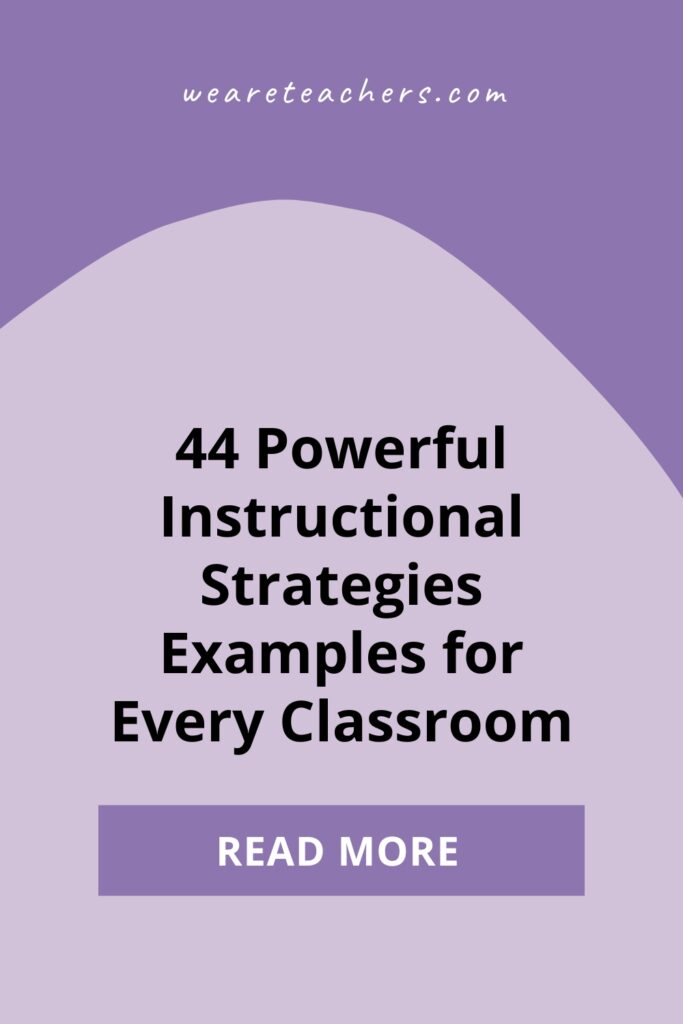
You Might Also Like

Understanding Intrinsic vs. Extrinsic Motivation in the Classroom
What's the magic formula? Continue Reading
Copyright © 2024. All rights reserved. 5335 Gate Parkway, Jacksonville, FL 32256

Art and Science of Teaching / Problem Solving in Seven Steps

Step 1: Determine whether you have a problem and whether it's worth solving
Step 2: affirm positive beliefs regarding your ability to solve the problem, step 3: clarify the obstacle and identify possible solutions, step 4: determine each solution's likelihood of success and consider the resources required, step 5: try out the solution that has the greatest chance of success, step 6: if your solution doesn't work, try a different one, step 7: if you can't find a solution, identify an alternative goal, make it explicit.
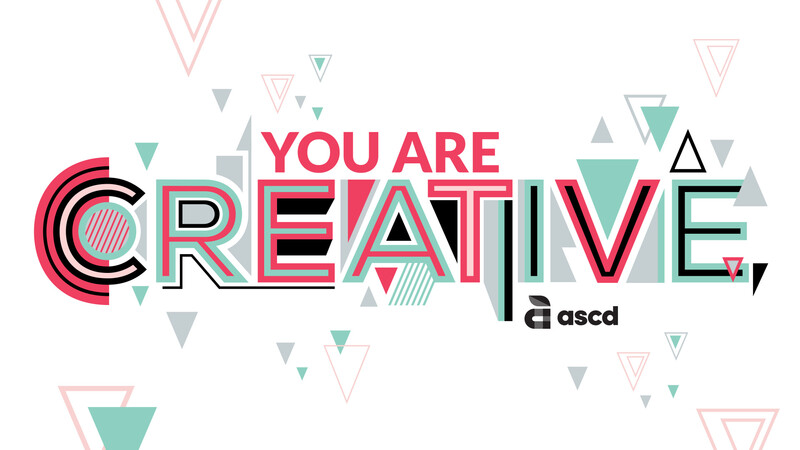
.css-191dech{margin-top:16px;margin-bottom:16px;display:-webkit-box;display:-webkit-flex;display:-ms-flexbox;display:flex;} .css-12z0wuy{margin-right:8px;} • .css-16w6vyg{margin:0;font-family:'Poppins',sans-serif;font-weight:400;font-size:0.875rem;line-height:1.43;font-size:1rem;font-weight:400;line-height:1.625rem;letter-spacing:0.2px;} 1 See, for example, Marzano, R. J., & Heflebower, T. (2012). Teaching and assessing 21st century skills . Bloomington, IN: Marzano Research Laboratory; Marzano, R. J. (2007). The art and science of teaching: A comprehensive framework for effective instruction . Alexandria, VA: ASCD.

Robert Marzano is the CEO of Marzano Research Laboratory in Centennial, CO, which provides research-based, partner-centered support for educators and education agencies—with the goal of helping teachers improve educational practice.
As strategic advisor, Robert brings over 50 years of experience in action-based education research, professional development, and curriculum design to Marzano Research. He has expertise in standards-based assessment, cognition, school leadership, and competency-based education, among a host of areas.
He is the author of 30 books, 150 articles and chapters in books, and 100 sets of curriculum materials for teachers and students in grades K–12.
ASCD is a community dedicated to educators' professional growth and well-being.
Let us help you put your vision into action., from our issue.
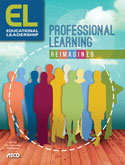
Eberly Center
Teaching excellence & educational innovation.
This site provides practical strategies to address teaching problems across the disciplines. These strategies are firmly grounded in educational research and learning principles.
How does it work?
This site supplements our 1-on-1 teaching consultations. CONTACT US to talk with an Eberly colleague in person!
learning principles
- Students' prior knowledge can help or hinder learning. MORE
- How students organize knowledge influences how they learn and apply what they know. MORE
- Students' motivation determines, directs, and sustains what they do to learn. MORE
- To develop mastery, students must acquire component skills, practice integrating them, and know when to apply what they have learned. MORE
- Faculty Support
- Graduate Student Support
- Canvas @ Carnegie Mellon
- Quick Links
5 Advantages and Disadvantages of Problem-Based Learning [+ Activity Design Steps]
Written by Marcus Guido
- Teaching Strategies
Wondering if problem-based learning is right for your classroom? Here are 5 advantages and disadvantages, plus a downloadable activity guide for reference!
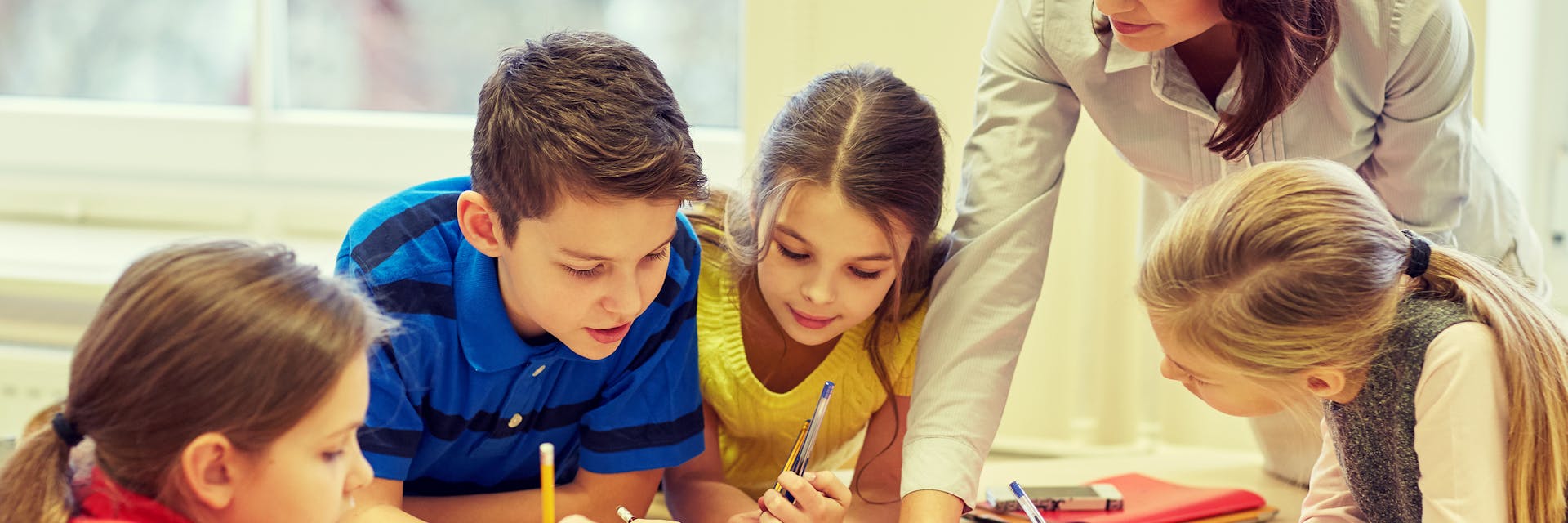
- Advantages of Problem-Based Learning
- Disadvantages of Problem-Based Learning
- Steps to Designing Problem-Based Learning Activities
Used since the 1960s, many teachers express concerns about the effectiveness of problem-based learning (PBL) in certain classroom settings.
Whether you introduce the student-centred pedagogy as a one-time activity or mainstay exercise, grouping students together to solve open-ended problems can present pros and cons.
Below are five advantages and disadvantages of problem-based learning to help you determine if it can work in your classroom.
If you decide to introduce an activity, there are also design creation steps and a downloadable guide to keep at your desk for easy reference.
1. Development of Long-Term Knowledge Retention
Students who participate in problem-based learning activities can improve their abilities to retain and recall information, according to a literature review of studies about the pedagogy .
The literature review states “elaboration of knowledge at the time of learning” -- by sharing facts and ideas through discussion and answering questions -- “enhances subsequent retrieval.” This form of elaborating reinforces understanding of subject matter , making it easier to remember.
Small-group discussion can be especially beneficial -- ideally, each student will get chances to participate.
But regardless of group size, problem-based learning promotes long-term knowledge retention by encouraging students to discuss -- and answer questions about -- new concepts as they’re learning them.
2. Use of Diverse Instruction Types
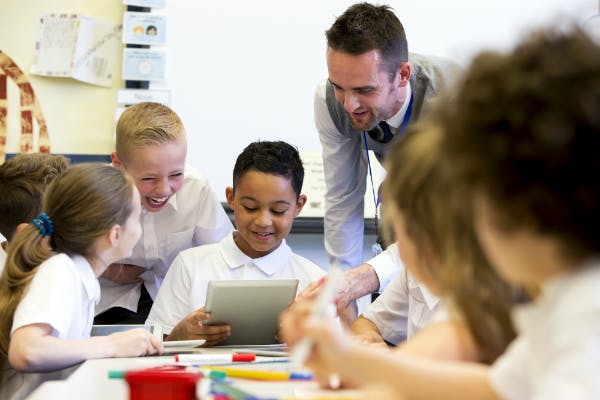
You can use problem-based learning activities to the meet the diverse learning needs and styles of your students, effectively engaging a diverse classroom in the process. In general, grouping students together for problem-based learning will allow them to:
- Address real-life issues that require real-life solutions, appealing to students who struggle to grasp abstract concepts
- Participate in small-group and large-group learning, helping students who don’t excel during solo work grasp new material
- Talk about their ideas and challenge each other in a constructive manner, giving participatory learners an avenue to excel
- Tackle a problem using a range of content you provide -- such as videos, audio recordings, news articles and other applicable material -- allowing the lesson to appeal to distinct learning styles
Since running a problem-based learning scenario will give you a way to use these differentiated instruction approaches , it can be especially worthwhile if your students don’t have similar learning preferences.
3. Continuous Engagement
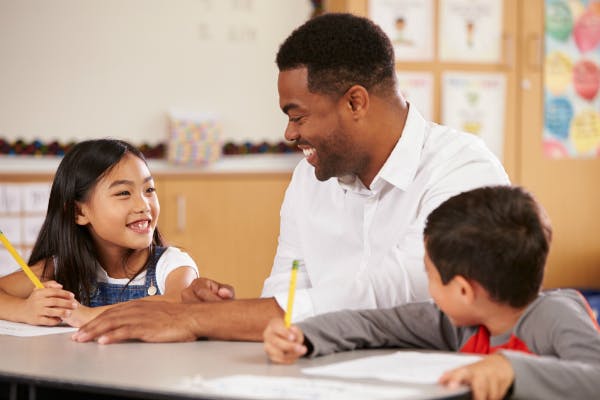
Providing a problem-based learning challenge can engage students by acting as a break from normal lessons and common exercises.
It’s not hard to see the potential for engagement, as kids collaborate to solve real-world problems that directly affect or heavily interest them.
Although conducted with post-secondary students, a study published by the Association for the Study of Medical Education reported increased student attendance to -- and better attitudes towards -- courses that feature problem-based learning.
These activities may lose some inherent engagement if you repeat them too often, but can certainly inject excitement into class.
4. Development of Transferable Skills
Problem-based learning can help students develop skills they can transfer to real-world scenarios, according to a 2015 book that outlines theories and characteristics of the pedagogy .
The tangible contexts and consequences presented in a problem-based learning activity “allow learning to become more profound and durable.” As you present lessons through these real-life scenarios, students should be able to apply learnings if they eventually face similar issues.
For example, if they work together to address a dispute within the school, they may develop lifelong skills related to negotiation and communicating their thoughts with others.
As long as the problem’s context applies to out-of-class scenarios, students should be able to build skills they can use again.
5. Improvement of Teamwork and Interpersonal Skills
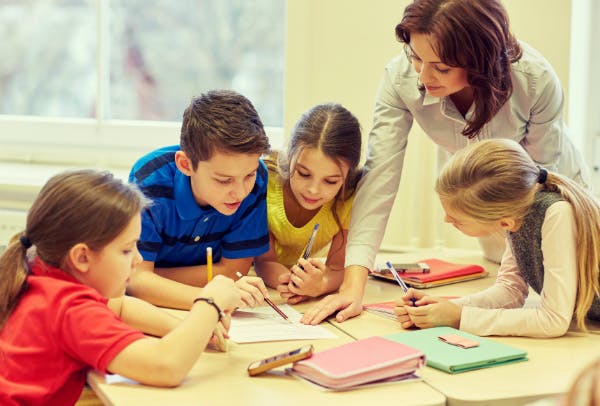
Successful completion of a problem-based learning challenge hinges on interaction and communication, meaning students should also build transferable skills based on teamwork and collaboration . Instead of memorizing facts, they get chances to present their ideas to a group, defending and revising them when needed.
What’s more, this should help them understand a group dynamic. Depending on a given student, this can involve developing listening skills and a sense of responsibility when completing one’s tasks. Such skills and knowledge should serve your students well when they enter higher education levels and, eventually, the working world.
1. Potentially Poorer Performance on Tests
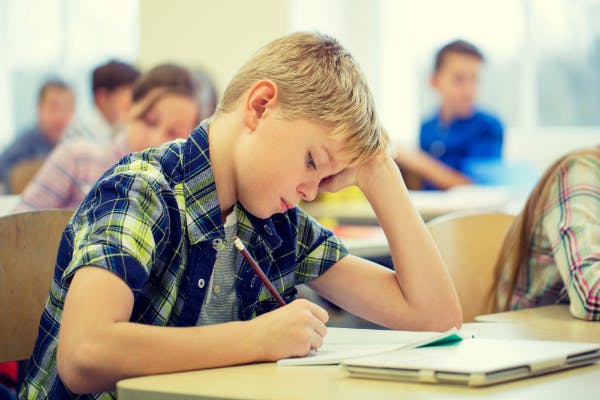
Devoting too much time to problem-based learning can cause issues when students take standardized tests, as they may not have the breadth of knowledge needed to achieve high scores. Whereas problem-based learners develop skills related to collaboration and justifying their reasoning, many tests reward fact-based learning with multiple choice and short answer questions. Despite offering many advantages, you could spot this problem develop if you run problem-based learning activities too regularly.
2. Student Unpreparedness
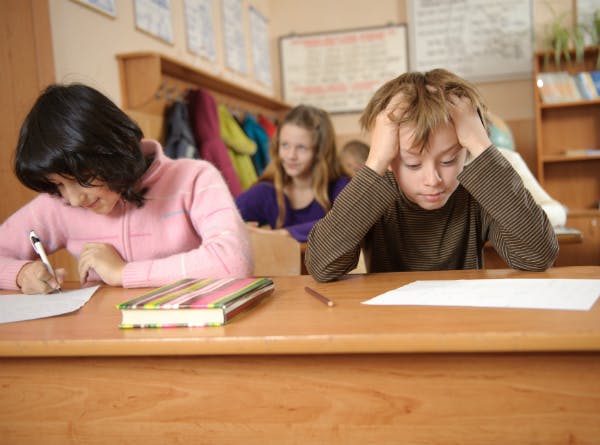
Problem-based learning exercises can engage many of your kids, but others may feel disengaged as a result of not being ready to handle this type of exercise for a number of reasons. On a class-by-class and activity-by-activity basis, participation may be hindered due to:
- Immaturity -- Some students may not display enough maturity to effectively work in a group, not fulfilling expectations and distracting other students.
- Unfamiliarity -- Some kids may struggle to grasp the concept of an open problem, since they can’t rely on you for answers.
- Lack of Prerequisite Knowledge -- Although the activity should address a relevant and tangible problem, students may require new or abstract information to create an effective solution.
You can partially mitigate these issues by actively monitoring the classroom and distributing helpful resources, such as guiding questions and articles to read. This should keep students focused and help them overcome knowledge gaps. But if you foresee facing these challenges too frequently, you may decide to avoid or seldom introduce problem-based learning exercises.
3. Teacher Unpreparedness
If supervising a problem-based learning activity is a new experience, you may have to prepare to adjust some teaching habits . For example, overtly correcting students who make flawed assumptions or statements can prevent them from thinking through difficult concepts and questions. Similarly, you shouldn’t teach to promote the fast recall of facts. Instead, you should concentrate on:
- Giving hints to help fix improper reasoning
- Questioning student logic and ideas in a constructive manner
- Distributing content for research and to reinforce new concepts
- Asking targeted questions to a group or the class, focusing their attention on a specific aspect of the problem
Depending on your teaching style, it may take time to prepare yourself to successfully run a problem-based learning lesson.
4. Time-Consuming Assessment

If you choose to give marks, assessing a student’s performance throughout a problem-based learning exercise demands constant monitoring and note-taking. You must take factors into account such as:
- Completed tasks
- The quality of those tasks
- The group’s overall work and solution
- Communication among team members
- Anything you outlined on the activity’s rubric
Monitoring these criteria is required for each student, making it time-consuming to give and justify a mark for everyone.
5. Varying Degrees of Relevancy and Applicability
It can be difficult to identify a tangible problem that students can solve with content they’re studying and skills they’re mastering. This introduces two clear issues. First, if it is easy for students to divert from the challenge’s objectives, they may miss pertinent information. Second, you could veer off the problem’s focus and purpose as students run into unanticipated obstacles. Overcoming obstacles has benefits, but may compromise the planning you did. It can also make it hard to get back on track once the activity is complete. Because of the difficulty associated with keeping activities relevant and applicable, you may see problem-based learning as too taxing.
If the advantages outweigh the disadvantages -- or you just want to give problem-based learning a shot -- follow these steps:
1. Identify an Applicable Real-Life Problem

Find a tangible problem that’s relevant to your students, allowing them to easily contextualize it and hopefully apply it to future challenges. To identify an appropriate real-world problem, look at issues related to your:
- Students’ shared interests
You must also ensure that students understand the problem and the information around it. So, not all problems are appropriate for all grade levels.
2. Determine the Overarching Purpose of the Activity
Depending on the problem you choose, determine what you want to accomplish by running the challenge. For example, you may intend to help your students improve skills related to:
- Collaboration
- Problem-solving
- Curriculum-aligned topics
- Processing diverse content
A more precise example, you may prioritize collaboration skills by assigning specific tasks to pairs of students within each team. In doing so, students will continuously develop communication and collaboration abilities by working as a couple and part of a small group. By defining a clear purpose, you’ll also have an easier time following the next step.
3. Create and Distribute Helpful Material
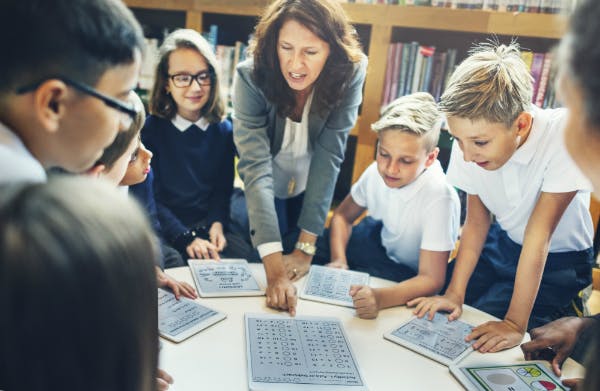
Handouts and other content not only act as a set of resources, but help students stay focused on the activity and its purpose. For example, if you want them to improve a certain math skill , you should make material that highlights the mathematical aspects of the problem. You may decide to provide items such as:
- Data that helps quantify and add context to the problem
- Videos, presentations and other audio-visual material
- A list of preliminary questions to investigate
Providing a range of resources can be especially important for elementary students and struggling students in higher grades, who may not have self-direction skills to work without them.
4. Set Goals and Expectations for Your Students
Along with the aforementioned materials, give students a guide or rubric that details goals and expectations. It will allow you to further highlight the purpose of the problem-based learning exercise, as you can explain what you’re looking for in terms of collaboration, the final product and anything else. It should also help students stay on track by acting as a reference throughout the activity.
5. Participate
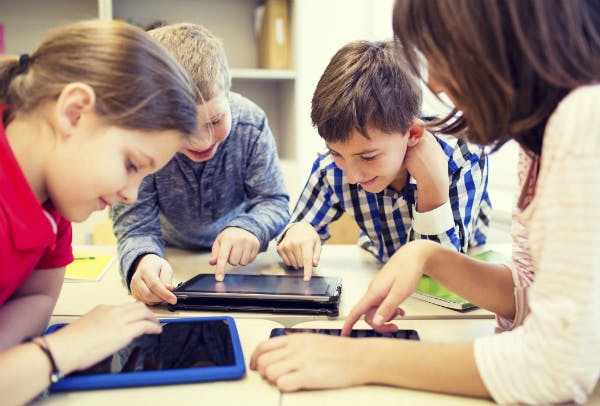
Although explicitly correcting students may be discouraged, you can still help them and ask questions to dig into their thought processes. When you see an opportunity, consider if it’s worthwhile to:
- Fill gaps in knowledge
- Provide hints, not answers
- Question a student’s conclusion or logic regarding a certain point, helping them think through tough spots
By participating in these ways, you can provide insight when students need it most, encouraging them to effectively analyze the problem.
6. Have Students Present Ideas and Findings
If you divided them into small groups, requiring students to present their thoughts and results in front the class adds a large-group learning component to the lesson. Encourage other students to ask questions, allowing the presenting group to elaborate and provide evidence for their thoughts. This wraps up the activity and gives your class a final chance to find solutions to the problem.
Wrapping Up
The effectiveness of problem-based learning may differ between classrooms and individual students, depending on how significant specific advantages and disadvantages are to you. Evaluative research consistently shows value in giving students a question and letting them take control of their learning. But the extent of this value can depend on the difficulties you face.It may be wise to try a problem-based learning activity, and go forward based on results.
Create or log into your teacher account on Prodigy -- an adaptive math game that adjusts content to accommodate player trouble spots and learning speeds. Aligned to US and Canadian curricula, it’s used by more than 350,000 teachers and 10 million students. It may be wise to try a problem-based learning activity, and go forward based on results.
Share this article
Table of Contents
Easily differentiate learning and engage your students with Prodigy Math.
LEARNING AND PROBLEM SOLVING: THE USE OF PROBLEM SOLVING METHOD TO ACHIEVE LEARNING IN PUPILS
- September 2020
- 9(3):239-250

- Ignatius Ajuru University of Education
Discover the world's research
- 25+ million members
- 160+ million publication pages
- 2.3+ billion citations

- Liudmyla Holubnycha
- Olena Kuznetsova
- Dina Demchenko

- Robert K. Atkinson

- Miriam Bassok
- J OPER RES SOC
- Thomas H. Cormen

- Clifford Stein

- Merlin C. Wittrock
- James F. Voss
- Timothy A. Post
- Charles C. Bonwell
- James A. Eison
- New Dir Teach Learn
- Marilla Svinicki
- Benjamin S. Bloom
- David R. Krathwohl
- Bertram B. Masia
- Recruit researchers
- Join for free
- Login Email Tip: Most researchers use their institutional email address as their ResearchGate login Password Forgot password? Keep me logged in Log in or Continue with Google Welcome back! Please log in. Email · Hint Tip: Most researchers use their institutional email address as their ResearchGate login Password Forgot password? Keep me logged in Log in or Continue with Google No account? Sign up
You are using an outdated browser. Upgrade your browser today or install Google Chrome Frame to better experience this site.
- Professional learning
Teach. Learn. Grow.
Teach. learn. grow. the education blog.

6 tips for supporting problem-based learning in your math classroom
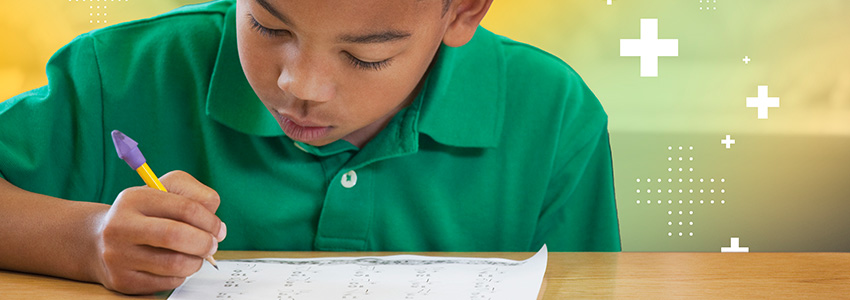
Most math teachers have been here before. We’ve all transposed the names of our own students for those in a word problem. We’ve all used our school community goings-on as fodder for plot lines: “If 89 middle schoolers are traveling on buses to Outdoor School, and each bus can transport 35 students and four chaperones.…” But how “real world” are we really getting?
We—Kailey Rhodes and Kristen Tsutsui, math teachers and authors of this blog post—wanted to know teachers’ experience with real-world problem-solving, what’s going well, and what’s in their way. So we surveyed some. In this post, we’ll walk you through what we asked, learned, and think as we move forward—and we’ll also share the resources our teachers shared with us. But first, let us introduce you to an official definition of real-world context in the math classroom.
The PISA Mathematics Framework
PISA is an international assessment administered to 15-year-olds globally. In their 2022 Mathematics Framework , PISA explains the underpinnings of their assessment as it relates to math literacy, reasoning, and problem-solving. It also stipulates that to uplift these underpinnings, mathematics problems should be presented in real-world contexts: personal, occupational, societal, and scientific.
Educators, take a moment to read the descriptions of these contexts . As you read, ask yourself the question we asked in our survey: “Which do you naturally find yourself gravitating toward in your classroom?”
- Personal: “Problems classified in the personal context category focus on activities of one’s self, one’s family, or one’s peer group. Personal contexts include (but are not limited to) those involving food preparation, shopping, games, personal health, personal transportation, sports, travel, personal scheduling, and personal finance.”
- Occupational: “Problems classified in the occupational context category are centered on the world of work. Items categorized as occupational may involve (but are not limited to) such things as measuring, costing, and ordering materials for building, payroll/accounting, quality control, scheduling/inventory, design/architecture, and job-related decision-making. Occupational contexts may relate to any level of the workforce, from unskilled work to the highest levels of professional work, although items in the PISA survey must be accessible to 15-year-old students.”
- Societal: “Problems classified in the societal context category focus on one’s community (whether local, national, or global). They may involve (but are not limited to) such things as voting systems, public transport, government, public policies, demographics, advertising, national statistics, and economics. Although individuals are involved in all of these things in a personal way, in the societal context category, the focus of problems is on the community perspective.”
- Scientific: “Problems classified in the scientific category relate to the application of mathematics to the natural world and issues and topics related to science and technology. Particular contexts might include (but are not limited to) such areas as weather or climate, ecology, medicine, space science, genetics, measurement, and the world of mathematics itself. Items that are intra-mathematical, where all the elements involved belong in the world of mathematics, fall within the scientific context.”
Which context did you most resonate with? If you were to focus on one context per quarter, how would you order them? What is your biggest struggle with real-world context and problem-based learning? How do you bring the “real world” inside your classroom?
We surveyed a focus group of math teachers, from kindergarten to IB, to see what they thought.
Survey says!
When we asked our teachers, “Which do you naturally find yourself gravitating toward in your classroom?” personal and scientific contexts were the winners, with societal coming in fourth. Our guess for this is that societal is not only ever-changing but is also often politically adjacent, something educators can, understandably, be wary of approaching.
Naturally, personal real-world math context offers an entry point into students’ interests, which is paramount in the math classroom. One teacher said, “Good projects that connect to the curriculum and also interest the students are worth their weight in gold. I really wish publishers did a better job of planning good projects; in most books I’ve used, the projects, if they exist at all, are an afterthought and poorly done.”
When it comes to other contexts, like societal, the bullseye of curriculum connection, student interest level, and math teacher time is a hard one to hit. As one teacher said, “With more time I would like to start new math topics with ‘real world problems’ and have the students brainstorm what knowledge would be useful to solve them, building resilience in the face of complex problems. However, these kinds of freeform explorations take time that I often feel like I don’t have in my class.”
This theme of “not enough time” appeared often, with teachers expressing a desire for more real-world presence, including cross-collaboration with other colleagues. A teacher said, “I have tried to coordinate with science classes to talk about the mathematical aspects of science concepts they are learning, but it can be hard to coordinate and map those kinds of things onto my own curriculum.”
This was echoed in the teachers’ comments, along with many wishful statements about what they “would do…if.”
With all the time and resources, what would teachers do?
We asked teachers to describe their dream scenario: what they would do if they had more resources, time, and permission. In most responses, what stood out was teachers’ love for math’s interconnectedness and innate curiosity. Some dreamed big:
- “An interdisciplinary project across all subjects that would allow students to see how math applies to all facets of the world”
- “Something like ‘a history of mathematical thought,’ bringing history, culture, psychology, ecology, science, and engineering into the curriculum”
- “Students being given the opportunity to explore a problem they are passionate about and explore ways that mathematics can be used to help solve it”
- “Students working alongside professionals in various math-related fields so they can see, firsthand, how the math they are learning is currently being used”
It’s clear that teachers want to provide classroom experiences that both underscore math’s omnipresence in the world around us and ignite students’ interests. It’s also clear that when your survey takers have to type qualifiers like, “But this would take a lot of time” and “We don’t have the resources for this,” the “real world” is actually what’s in the way. So, what can be done?
From ideal to real: Helpful tips & a relaxing thought on problem-based learning
No one knows better than math teachers that you can’t add time to your school day. But, through our interactions with teachers, we walked away with some resources and tips to share with you. Here are the gems:
- Split it into quadrants. Most teachers surveyed would order their quarters and contexts like this: first quarter, personal; second quarter, societal; third quarter, scientific; fourth quarter, occupational.
- Switch with science. One teacher said this: “Actually switch classes with a science teacher to reiterate how what they are learning in science is related to what we do in math. And then they can come to my class to do the same so they can really understand the connection.”
- Draw a parallel. “Have a project that seems like it might belong in an arts classroom, like creating a piece of clothing,” another teacher suggested. “They have to use multiple modes of mathematical knowledge to do this, like unit conversions (centimeters to inches to yards), spatial constraints (if fabric is a certain size, can I fit my pattern in it? How big do the pieces have to be to fit on the body?), and area (how much fabric do I need?).”
- Estimate. “I use Estimation 180 , but I gamify it to address average, mean, median, and mode. I have students secretly record their estimations, and I write them all on the board. We discuss the average classroom guess and how close our range is. Estimation is everywhere.”
- Level up. “I’ve been using Skew the Script to heighten engagement for all my students and teach them about larger global issues affecting society. Their After The AP Data Science Challenge aims to solve the real (unsolved) problem of finding a model to predict the best and worst colleges for conquering student debt.”
- Build the roster: “Try to arrange a handful of yearly speakers and field trips you can count on to bring the math to life. My husband is a civil engineer and uses the Pythagorean theorem. You’d be surprised how many folks would love to come in and talk to a math class—with your teacher guidance and enthusiasm, of course.”
And now for the relaxing thought: Start small. As with any endeavor in the classroom, no matter the discipline, the key is to work incrementally. We already know how important increments are, right, math teachers?
What is “real,” anyway?
Let’s return to the age-old question of, “When will we ever use this?” It plagues math teachers perhaps more than any other discipline, and the task of “real-world” problem-solving often feels like a “gotcha” moment. The fact is, sometimes, we math teachers don’t have a great real-world example of dividing negative fractions in our back pocket. But does that mean that it isn’t worth learning? Must every concept in math be nested perfectly within the “real” world?
In one particular mic-drop moment, one of our teachers shared, “I think the label ‘real-world’ has been used extensively in math education, and I’ve found it a bit frustrating. In many regards, math is the least ‘real’ discipline we teach children. It is, largely, the art of abstraction! That it is ‘real’ is in many ways the least interesting and important thing about it as a system of thinking, and this is often lost when continually looked at with the question ‘When will we ever use this?’”
Maybe when we’ll “use this” is when we’re thinking through a problem with many facets and variables. Math is, after all, less of a “what” and more of a “how.” How should we go about solving this? How do we use computational thinking to solve problems? How do we spiral what we already know with what we don’t?
We’re teaching kids how to think —and isn’t that the most real-world skill we can possibly teach?
To learn more about how NWEA can support you in teaching math, visit our website .
Recommended for you
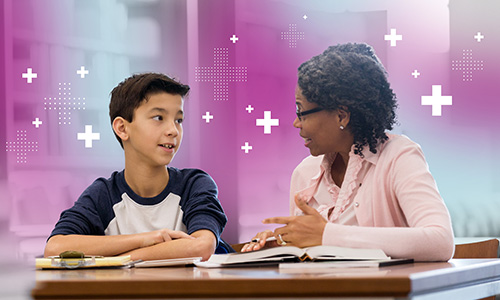
7 tips for encouraging student discourse about math with number talks
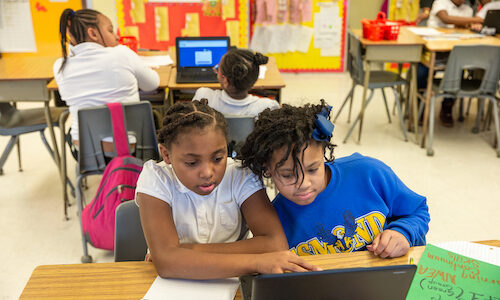
3 non-negotiables for differentiation in the math classroom
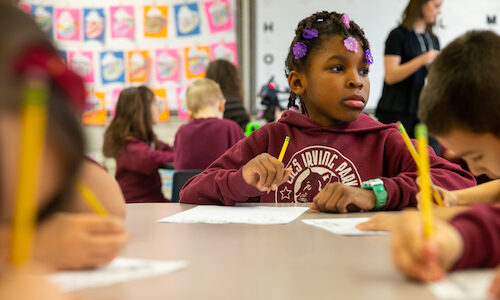
4 ways to engage students with writing in math class

Reading differentiation made easy
MAP Reading Fluency now includes Coach, a virtual tutor designed to help students strengthen reading skills in as little as 30 minutes a week.
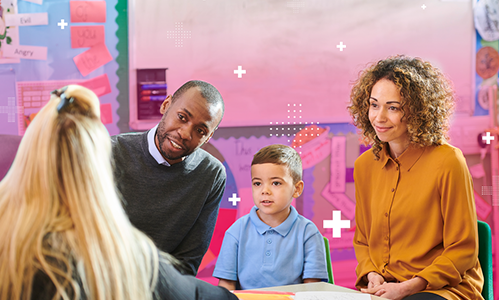
Helping students grow
Students continue to rebound from pandemic school closures. NWEA® and Learning Heroes experts talk about how best to support them here on our blog, Teach. Learn. Grow.
See the post

Put the science of reading into action
The science of reading is not a buzzword. It’s the converging evidence of what matters and what works in literacy instruction. We can help you make it part of your practice.
Get the guide

Support teachers with PL
High-quality professional learning can help teachers feel invested—and supported—in their work.
Read the article
STAY CURRENT by subscribing to our newsletter
You are now signed up to receive our newsletter containing the latest news, blogs, and resources from nwea..

COMMENTS
The problem-solving method is an effective teaching strategy that promotes critical thinking, creativity, and collaboration. It provides students with real-world problems that require them to apply their knowledge and skills to find solutions. By using the problem-solving method, teachers can help their students develop the skills they need to ...
The mathematician George Polya captured the problem solving principles and strategies he used in his discipline in the book How to Solve It: A New Aspect of Mathematical Method(Princeton University Press, 1957). The book includes a summary of Polya's problem solving heuristic as well as advice on the teaching of problem solving.
Teach problem-solving skills in the context in which they will be used by students (e.g., mole fraction calculations in a chemistry course). Use real-life problems in explanations, examples, and exams. Do not teach problem solving as an independent, abstract skill. Help students understand the problem. In order to solve problems, students need ...
Problem-based learning (PBL) is a student-centered teaching method where students are given the opportunity to solve open-ended real-world problems. The teacher provides limited guidance and is usually referred to as a "facilitator". The burden of responsibility for the majority of the work rests squarely on the shoulders of the students.
Working on solutions. In the solution phase, one develops and then implements a coherent plan for solving the problem. As you help students with this phase, you might ask them to: identify the general model or procedure they have in mind for solving the problem. set sub-goals for solving the problem. identify necessary operations and steps.
Problem-solving is the capacity to identify and describe a problem and generate solutions to fix it. Problem-solving involves other executive functioning behaviors as well, including attentional control, planning, and task initiation. Individuals might use time management, emotional control, or organization skills to solve problems as well.
Nilson (2010) lists the following learning outcomes that are associated with PBL. A well-designed PBL project provides students with the opportunity to develop skills related to: Working in teams. Managing projects and holding leadership roles. Oral and written communication. Self-awareness and evaluation of group processes. Working independently.
Problem-based learning (PBL) is a style of teaching that encourages students to become the drivers of their learning process. Problem-based learning involves complex learning issues from real-world problems and makes them the classroom's topic of discussion; encouraging students to understand concepts through problem-solving skills rather than ...
Teaching problem solving: Let students get 'stuck' and 'unstuck'. This is the second in a six-part blog series on teaching 21st century skills, including problem solving , metacognition ...
structured problem solving. 7) Use inductive teaching strategies to encourage synthesis of mental models and for. moderately and ill-structured problem solving. 8) Within a problem exercise, help ...
The problem-solving method involves three basic functions Woods' problem-solving model Identify the problem Think about it Plan a solution Carry out the plan Look back Other tips include Ask Open-Ended Questions Emphasize Process Over Product Model The Strategies Encourage Grappling Make problem resolution relevant to the lives of your students.
PBL is a student-centered approach to learning that involves groups of students working to solve a real-world problem, quite different from the direct teaching method of a teacher presenting facts and concepts about a specific subject to a classroom of students. Through PBL, students not only strengthen their teamwork, communication, and ...
Reading and Social Problem-Solving. Moss Elementary classrooms use a specific process to develop problem-solving skills focused on tending to social and interpersonal relationships. The process also concentrates on building reading skills—specifically, decoding and comprehension. Stop, Look, and Think. Students define the problem.
The problem solving method of teaching is a popular approach to learning that allows students to understand new concepts by doing. This approach provides students with examples and real-world situations, so they can see how the theory behind a concept or skill works in practice. In addition, students are given practice with each new concept or ...
Teaching about problem solving begins with suggested strategies to solve a problem. For example, "draw a picture," "make a table," etc. You may see posters in teachers' classrooms of the "Problem Solving Method" such as: 1) Read the problem, 2) Devise a plan, 3) Solve the problem, and 4) Check your work. There is little or no ...
Problem-solving is the ability to identify and solve problems by applying appropriate skills systematically. Problem-solving is a process—an ongoing activity in which we take what we know to discover what we don't know. It involves overcoming obstacles by generating hypo-theses, testing those predictions, and arriving at satisfactory solutions.
2. Problem-solving as a group. Have your students create and decorate a medium-sized box with a slot in the top. Label the box "The Problem-Solving Box.". Invite students to anonymously write down and submit any problem or issue they might be having at school or at home, ones that they can't seem to figure out on their own.
Problem-Solving. In this indirect learning method, students work their way through a problem to find a solution. Along the way, they must develop the knowledge to understand the problem and use creative thinking to solve it. STEM challenges are terrific examples of problem-solving instructional strategies.
For example, studies on topics related to problem solving (Helmi et al ... teaching methods in the cognitive field, teaching methods in the field of affective skills and skills generally, individualised teaching methods and principles, and teaching evaluation assessments. ... I observed that the higher the students' learning engagement and ...
Step 2: Affirm positive beliefs regarding your ability to solve the problem. This step addresses the negative self-talk that often occurs when people encounter a problem. Although such self-talk is natural, it can have a detrimental effect on one's ability to solve problems. Teachers can help students overcome this tendency by replacing ...
How does it work? Step 1: Identify a PROBLEM you encounter in your teaching. Step 2: Identify possible REASONS for the problem Step 3: Explore STRATEGIES to address the problem. This site supplements our 1-on-1 teaching consultations. CONTACT US to talk with an Eberly colleague in person!
Advantages of Problem-Based Learning. 1. Development of Long-Term Knowledge Retention. Students who participate in problem-based learning activities can improve their abilities to retain and recall information, according to a literature review of studies about the pedagogy.. The literature review states "elaboration of knowledge at the time of learning" -- by sharing facts and ideas ...
Abstract. Problem-based learning is a recognized teaching method in which complex real-world problems are used as the vehicle to promote student learning of concepts and principles as opposed to ...
In their 2022 Mathematics Framework, PISA explains the underpinnings of their assessment as it relates to math literacy, reasoning, and problem-solving. It also stipulates that to uplift these underpinnings, mathematics problems should be presented in real-world contexts: personal, occupational, societal, and scientific.
'The Injustice of War' is a special Be Love Day 2024 episode of the ReThink Podcast. This first ReThink episode of Season 3 features a conversation about...